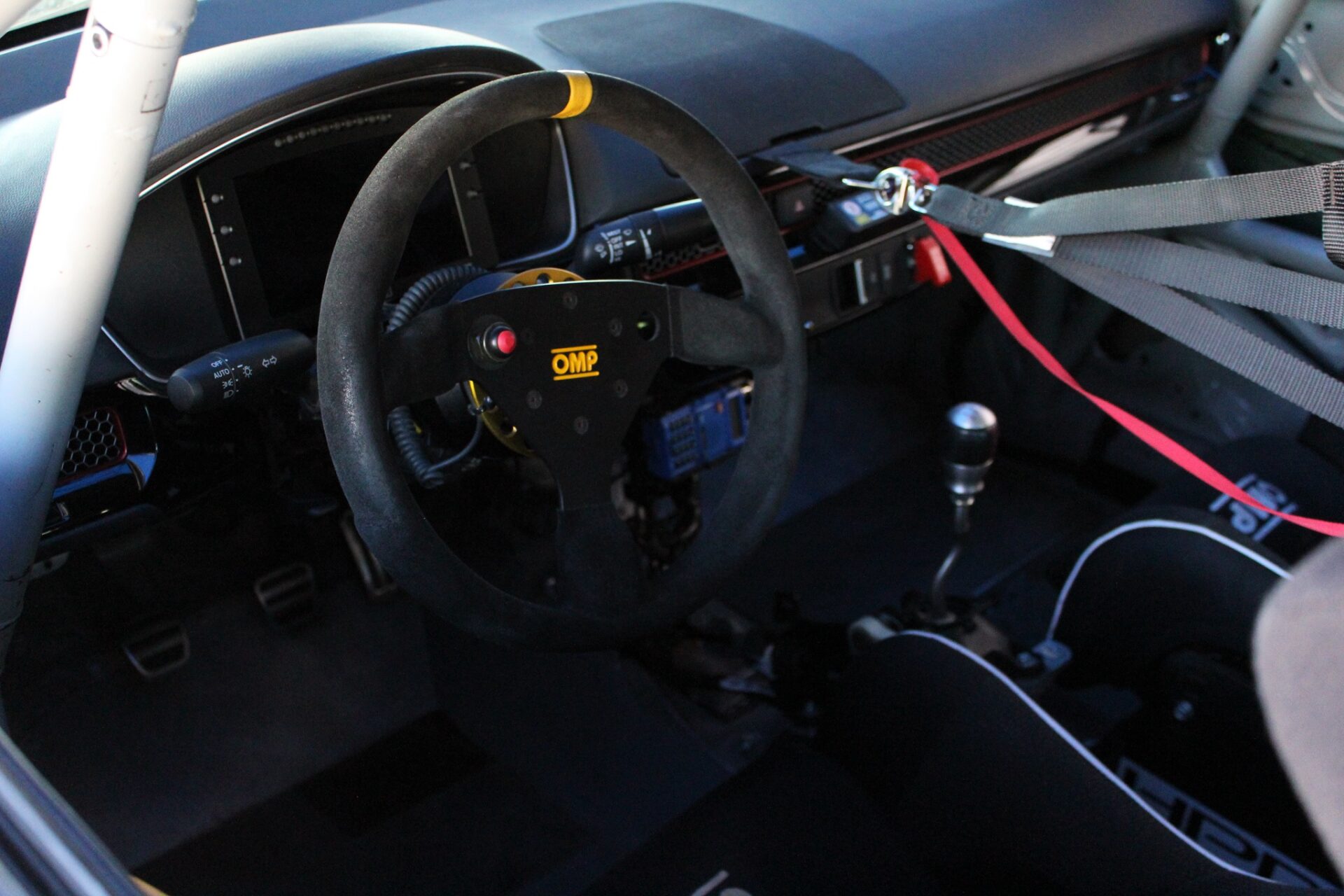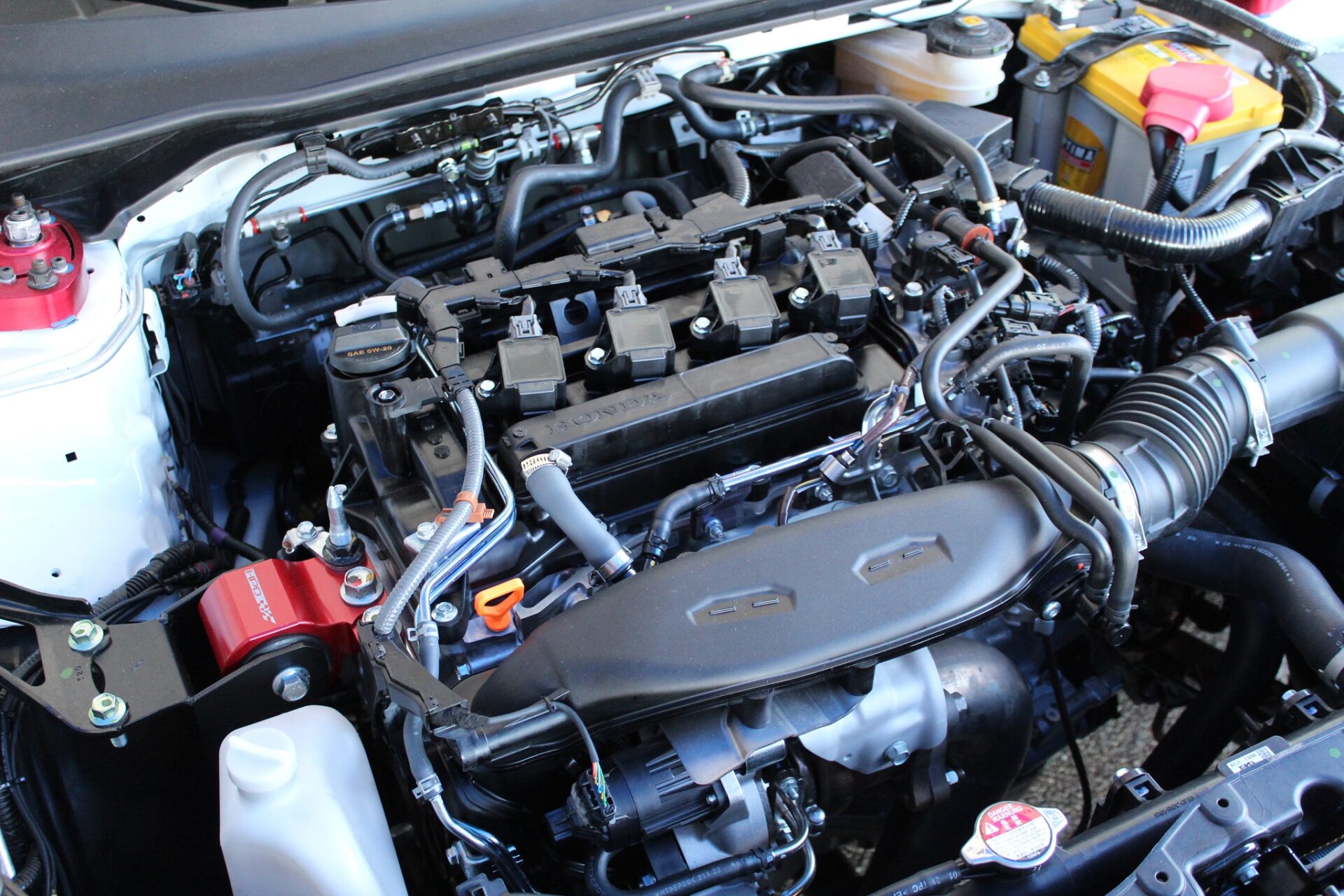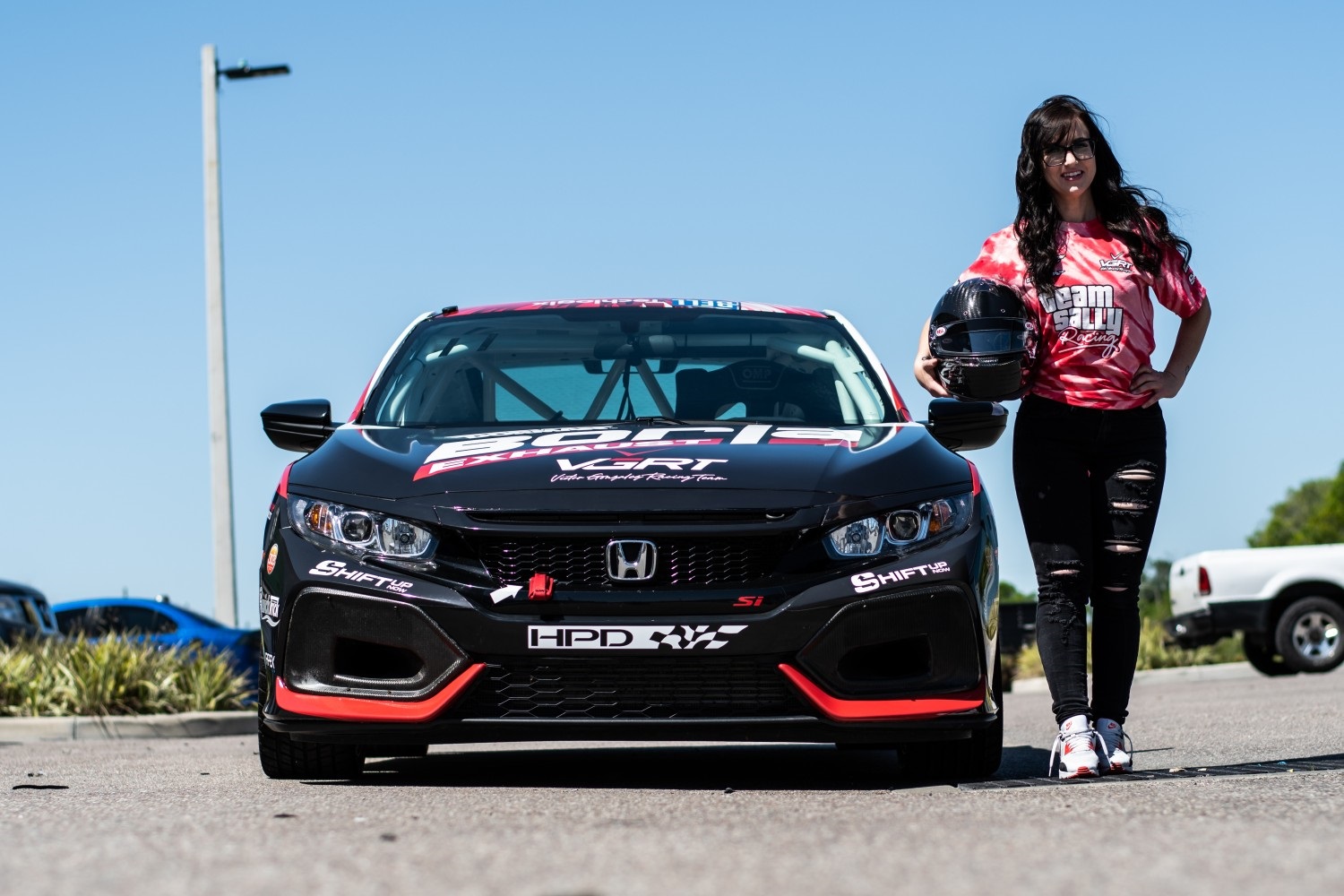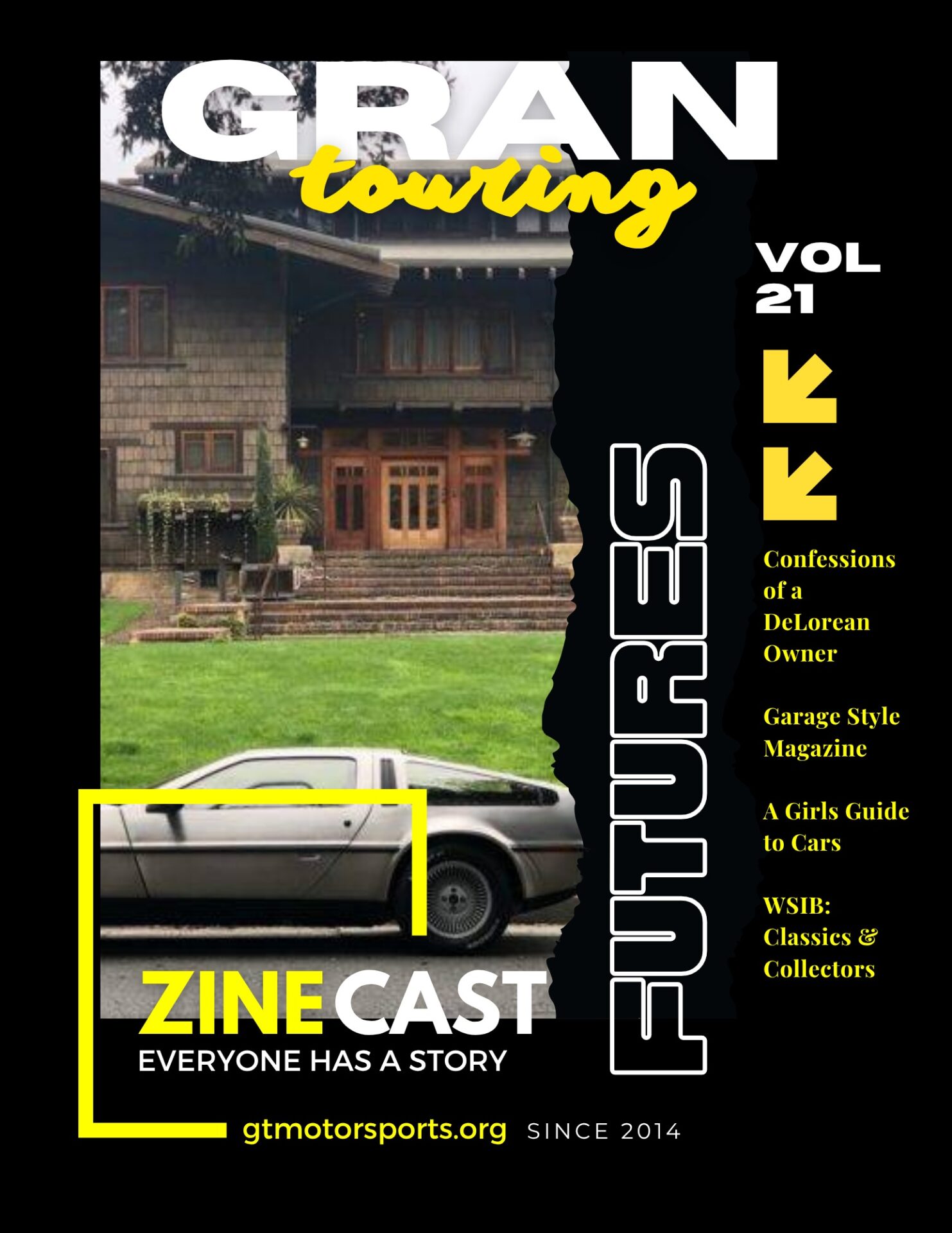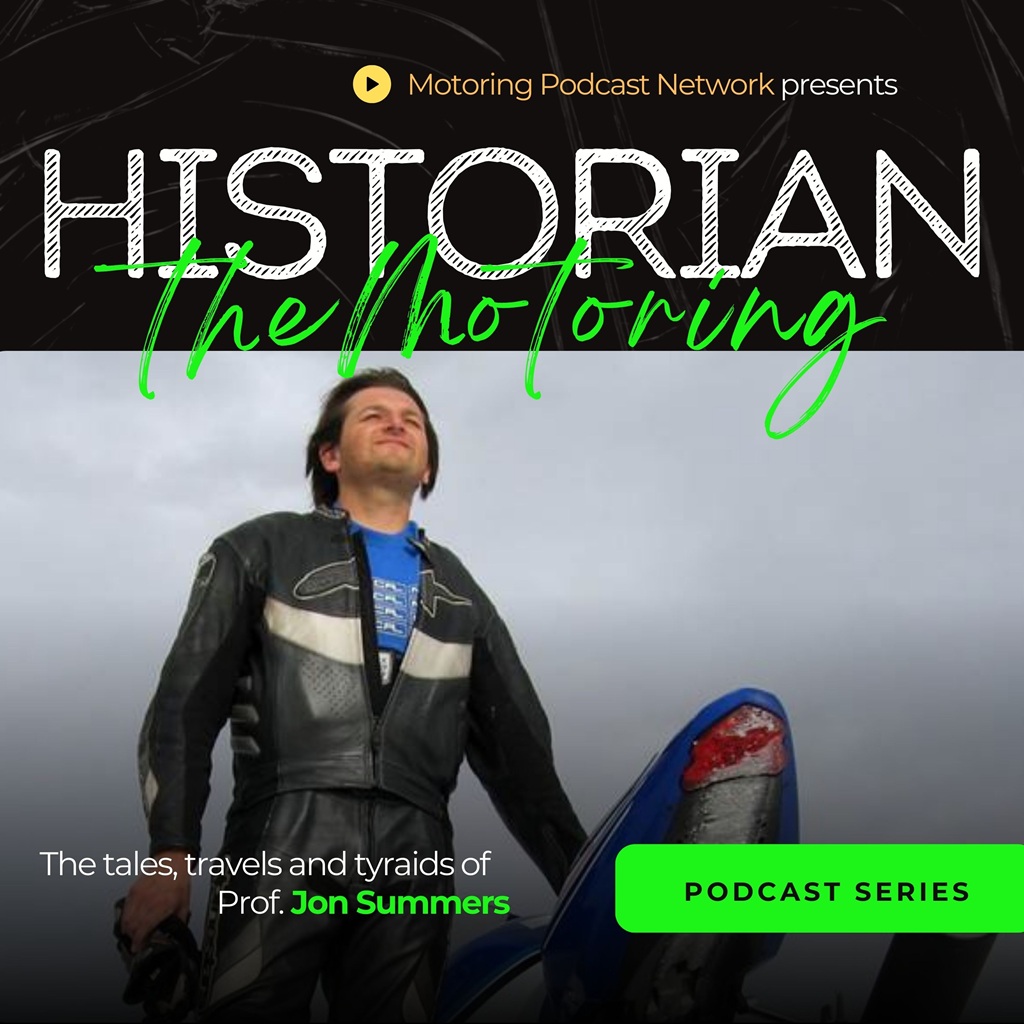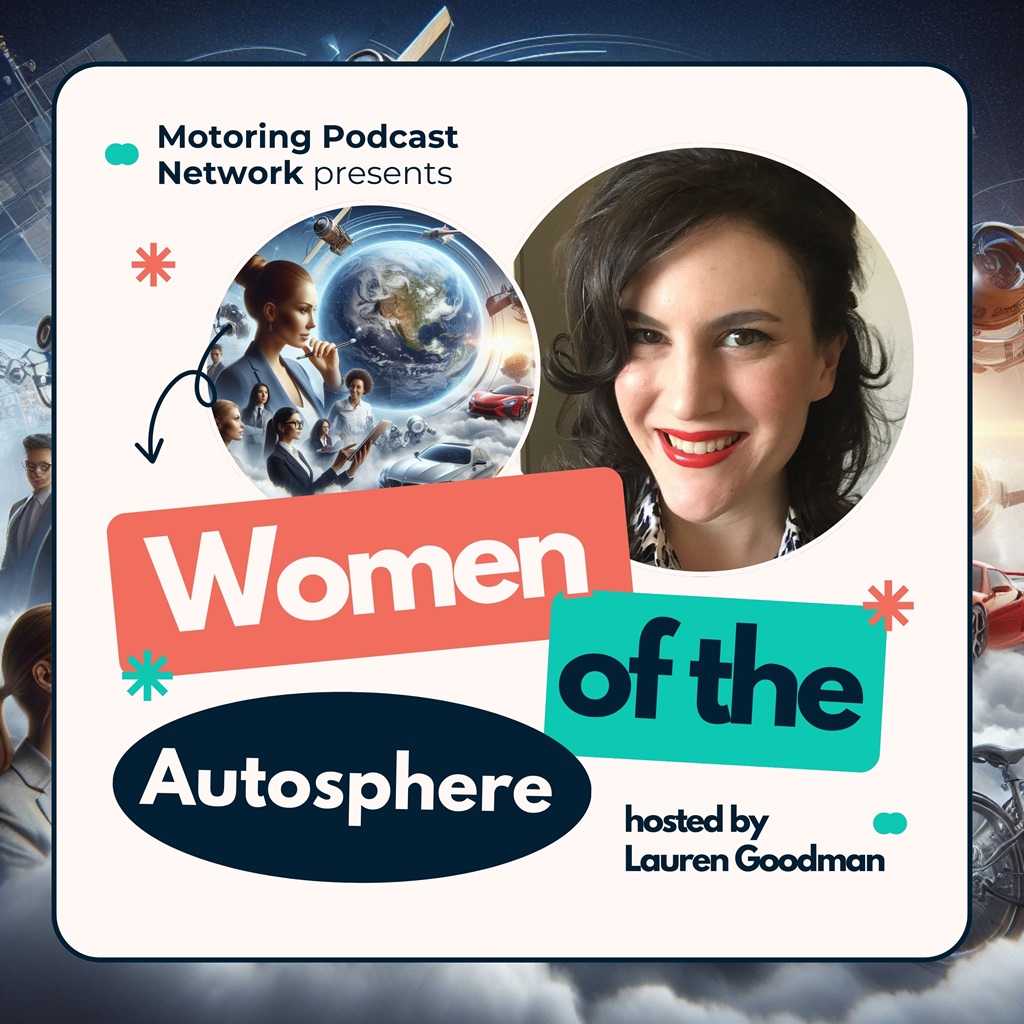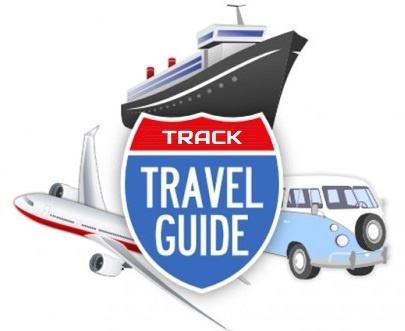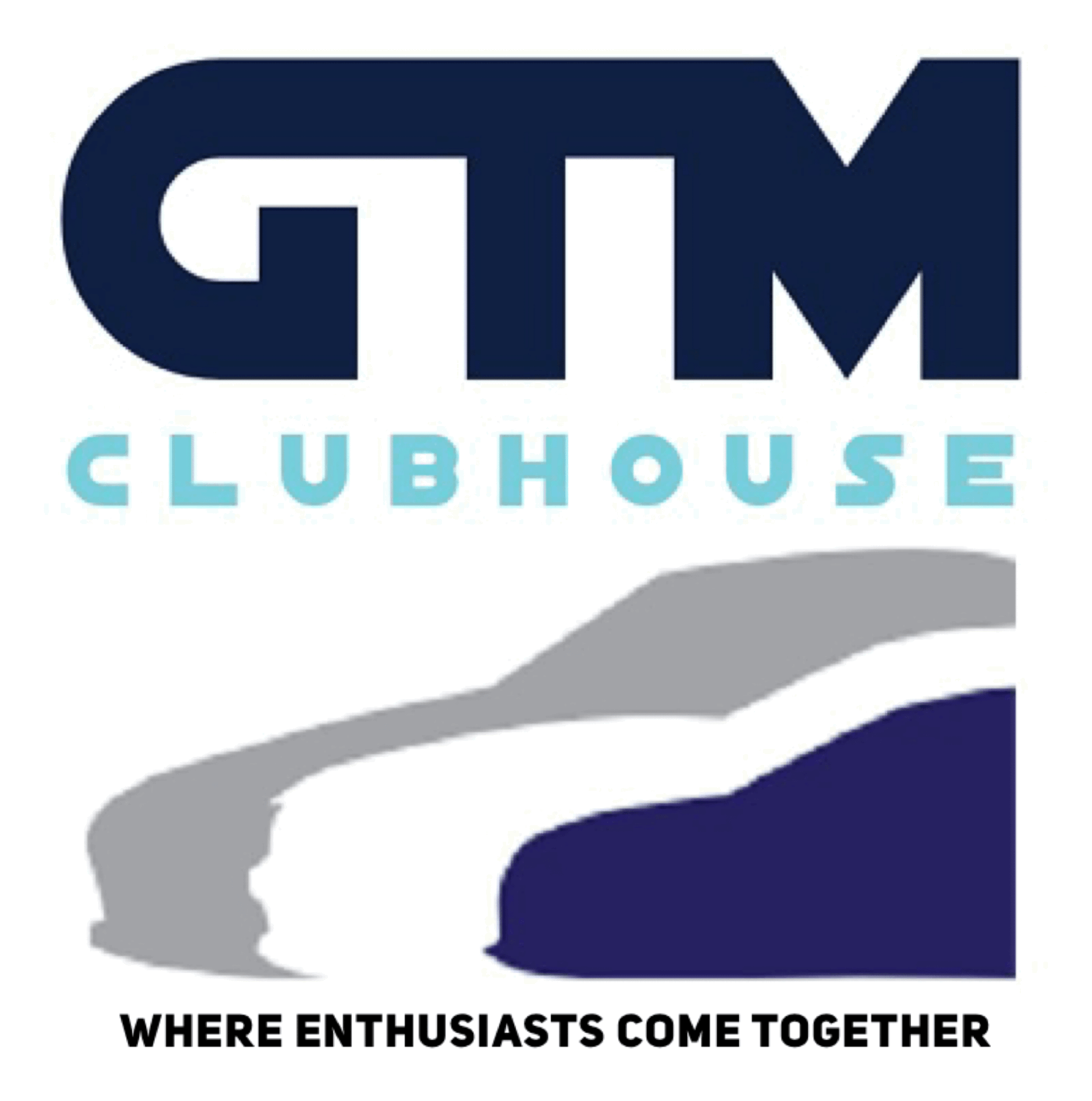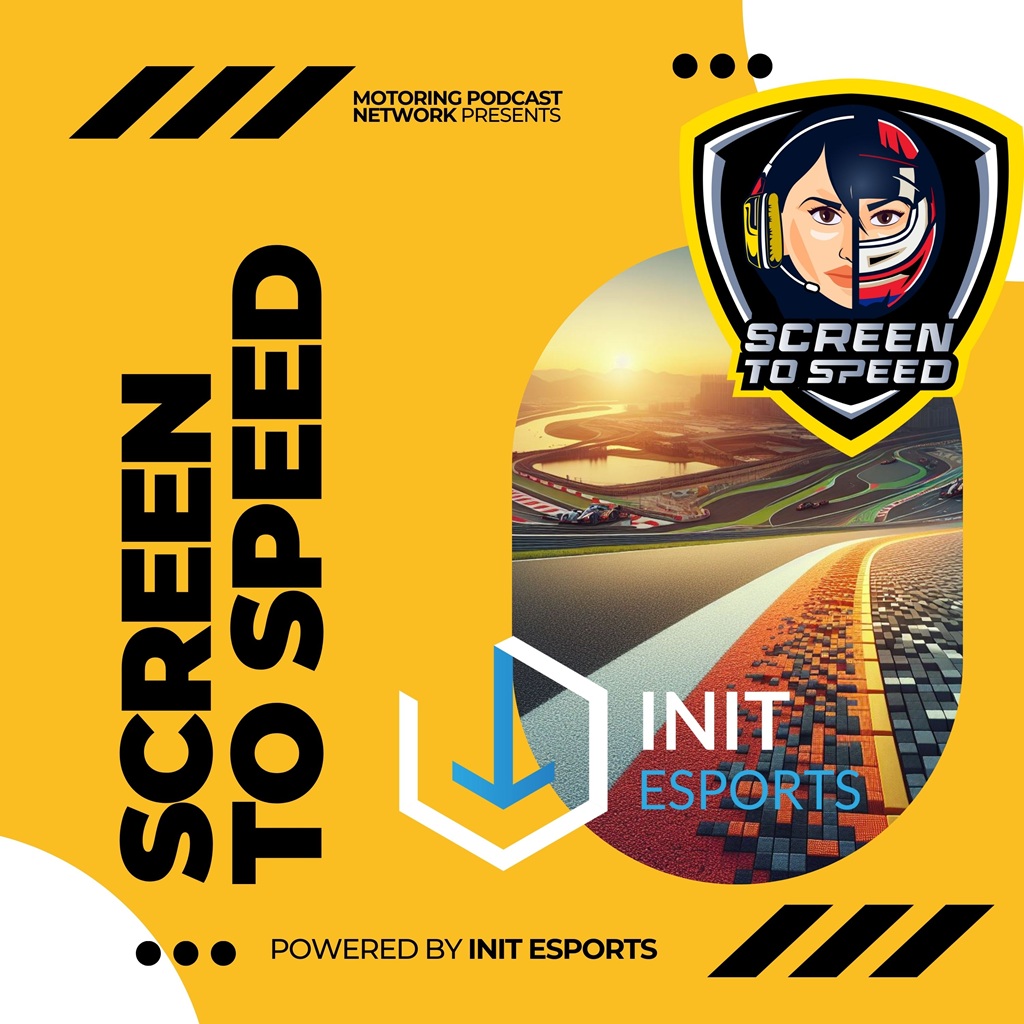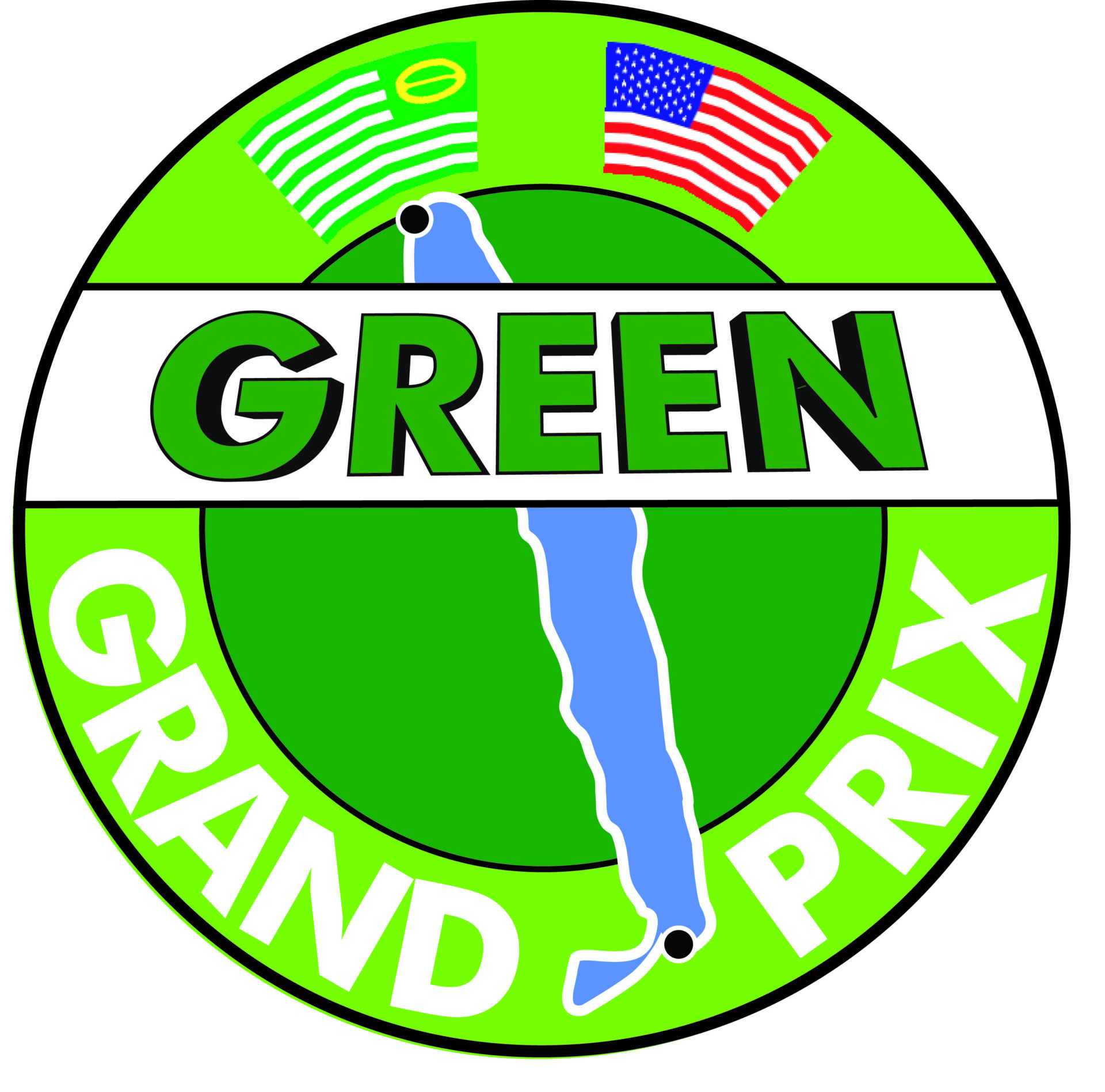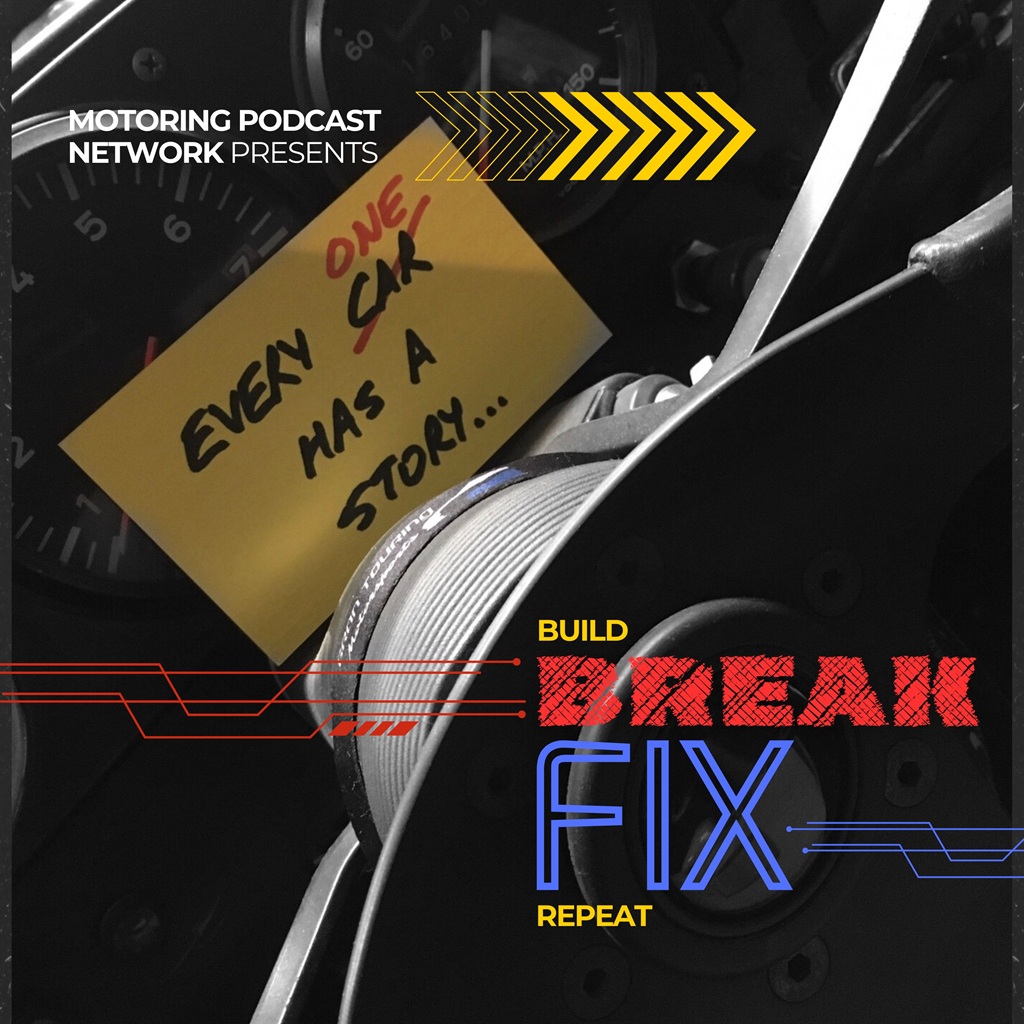What do a clapped-out MGB, a Ford Pinto, and a podium at Le Mans have in common? They’re all chapters in the remarkable motorsports journey of Jim Jordan, Director of Touring Car Racing at SRO Motorsports America. In this episode of the Break/Fix, Jim shares how a childhood fascination with racing evolved into a career spanning grassroots grit, corporate strategy, and global endurance racing.
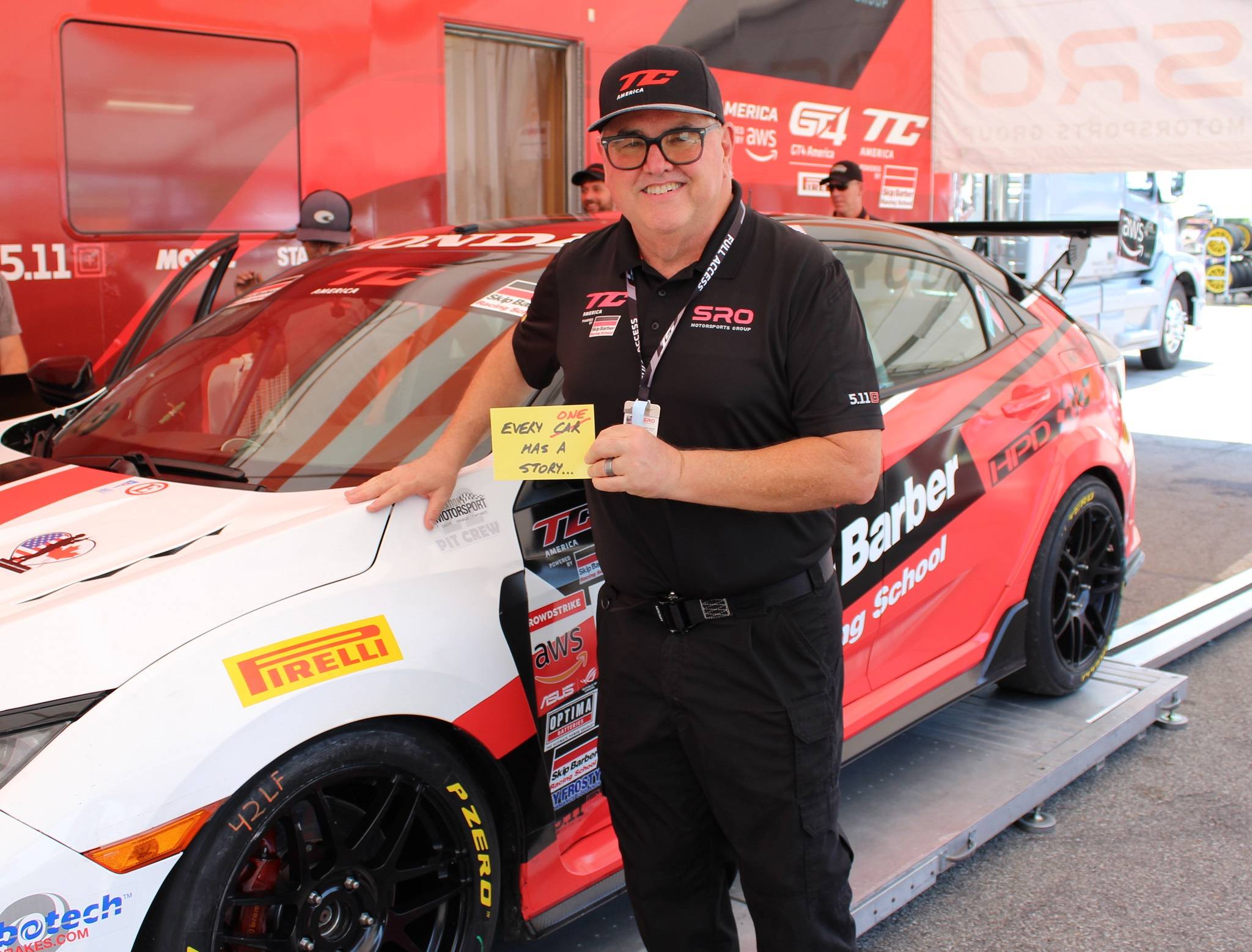
Jim’s motorsports origin story begins in New Jersey, where his father – a Trans-Am fan and Mustang owner – introduced him to racing at the now-defunct Trenton Speedway. Watching legends like Mario Andretti and Mark Donohue ignited a lifelong passion. “There are Halloween photos of me dressed as a race driver,” Jim recalls, “complete with Goodyear stripes.”
Tune in everywhere you stream, download or listen!
 |  |  |
Jim’s first real race? A three-hour IMSA RS event in a Ford Pinto. “It was a good handling car – like a Miata, no horsepower, all cornering speed,” he says. Racing on a shoestring budget, Jim pumped gas at Alan Marsh’s station to fund his efforts. He crossed paths with grassroots icons like Lyn St. James, eventually co-driving a 25-hour Thunderhill race with her – albeit hours apart in their stints.
- Spotlight
- Synopsis
- Transcript
- Highlights
- Bonus Content
Spotlight
Jim Jordan - Series Director for SRO Motorsports - TC America
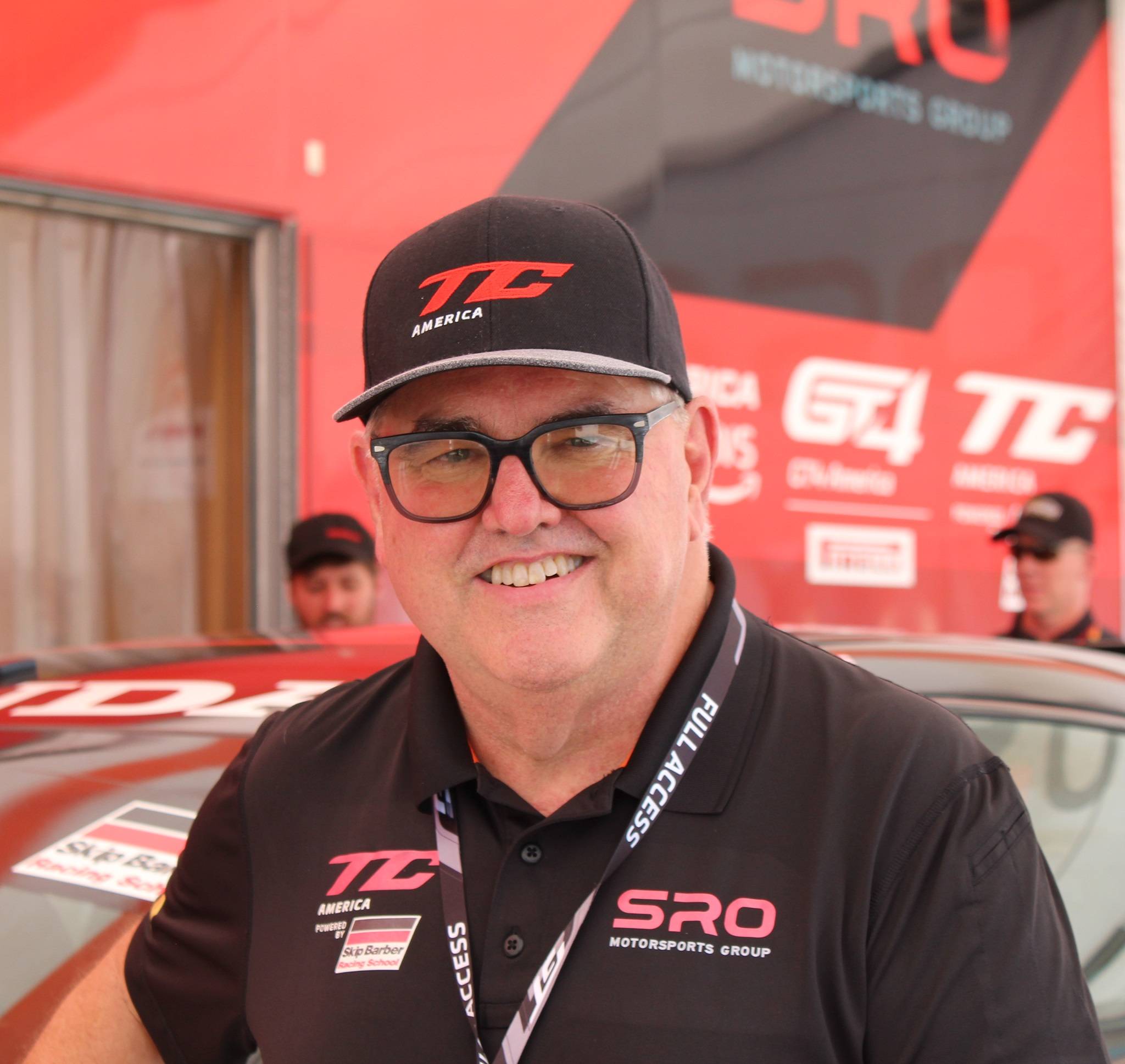
With a career in motorsports that spans everything from working for a major auto manufacturer, to time behind the wheel of a race car, to finally team ownership - Jim Jordan brings a wealth of experience to his role as the SRO Motorsports GT America, Touring Car Series Director.

Contact: Jim Jordan at jim.jordan@sro-motorsports.com | N/A | Visit Online!![]()
![]()
![]()
![]()
Synopsis
This Break/Fix episode features an interview with Jim Jordan, the SRO Motorsports GT America Touring Car Series Director. Jim shares his extensive journey in motorsports, from attending his first race at Trenton Speedway to racing Ford Pintos and ultimately working with major automotive brands like Mazda. The episode covers his involvement in grassroots racing, technical training with Mazda, the creation of the Mazda Road to Indy, and collaborating with Patrick Dempsey. Jim explains the concept and execution of Balance of Performance (BOP) in touring car racing and his role in promoting and expanding the TC America series. Additionally, the episode discusses new ventures like the upcoming Toyota GR Cup aimed at fostering young talent in motorsports. The podcast provides an insightful look into the business and strategic aspects of professional racing.
- Early Cars you’ve had/raced; We heard that you raced in a Pinto? Let’s unpack that.
- We interviewed Dean Case a while back, and he spoke about his time on the design team at Mazda, we came to find out that you were also involved with Mazda for many years as well?
- One of the things we haven’t explored yet on this show, is the BUSINESS side of Motorsports, many people often forget that there is more to this than just cars going around in a circle. Tell us about your experiences, as a driver and a team owner, and the business of motorsports.
- The motorsports world can often feel small, and it’s not uncommon to rub elbows with celebrities – let’s talk about the time you’ve spent with Patrick Dempsey & at LeMans.
- We should probably get back to talking about your involvement with SRO, you’re in charge of the TC (Touring Car) portion of the program.
- Can you explain what TC is (or isn’t), the regulations, we asked Greg Gill “what is a TC car?” What are the differences between classes like TCX > TCR > TC and TCA?
- Lets talk about BOP
- We often joke on our Drive Thru about “small cars” like the Chevy Spark (which is finally on its way out) and have asked some other drivers during our Pit Stop questions “would you drive one?” and the answer is generally a flat “NO” followed by an awkward pause then “but if it was a B-SPEC, I would” – you had some involvement in B-SPEC racing – would you care to expand on that, and talk about what you’d hoped for that series?
Transcript
Crew Chief Brad: [00:00:00] Break Fix Podcast is all about capturing the living history of people from all over the autos sphere, from wrench, turners, and racers to artists, authors, designers, and everything in between. Our goal is to inspire a new generation of Petrolhead that wonder how did they get that job or become that person.
The road to success is paved by all of us because everyone has a story.
Crew Chief Eric: The following episode is brought to you by SRO Motorsports America and their partners at AWS CrowdStrike, Fantech Pelli, and the Skip Barber Racing School. Be sure to follow all the racing action by visiting www.sromotorsports.com or take a shortcut to GT America us and be sure to follow them on social at GT America, on Twitter and Instagram at SRO GT America on Facebook, and catch live coverage of the races on their YouTube channel.
At GT World[00:01:00]
Crew Chief Brad: with a career in motorsports that spans everything from working for a major auto manufacturer to time behind the wheel of a race car. To finally team ownership, Jim Jordan brings a wealth of experience to his role as the SRO Motorsports GT America Touring Car Series Director.
Crew Chief Eric: In this week’s episode of Break Fix, Jim explains his role and how his previous experiences have shaped his outlook as he helps to guide SRO into the latest golden age of sports car racing.
So please join us in welcoming Jim Jordan to break fix. Thank you very much. It’s, uh, great to be here. So like every break fix episode, we love to get into the details around people’s origin stories because let’s face it, everyone has a story. So let’s talk about Jim, the Petrolhead. How did you get into cars, into motor sports?
Do you come from a racing family?
Jim Jordan: I don’t come from a family that raced, although I will say, uh, [00:02:00] first race I ever went to is the Trenton Speedway in Trenton, New Jersey, which was the old New Jersey fairground. So I’m showing my advanced age now where I saw Mario Andretti in the Dean Van Line special win, the Trenton one 50.
My dad liked racing, so my dad was a racing fan, so he took my brother and I to Trenton Speedway, took my eldest sister to Trenton Speedway while it still existed. He was a fan of the TransAm series during its huge heyday. He owned a 65 Mustang JT convertible and that was his, you know, the car he loved.
And, uh, so I went to First Road Race as Watkins Clan. And it was a combination SCCA National TransAm race and saw Mark Donahue win in a Penske Camaro. So, you know, just a great time TransAm racing and just kind of became a huge fan. And you know, as a kid there’s pictures of [00:03:00] me in a Halloween costume that my mom made as a race driver with the traditional Goodyear stripes on the side.
So been a fan for a long time and been very fortunate to have turned into a career that kept me and my family going for a very long time. So
Crew Chief Eric: I hear rumor that in your early days of racing and getting into motor sports, some of the grassroots racing that you did, that you raced a pinto.
Jim Jordan: Yeah, that’s exactly right.
My first real race, I had done some SCCA driver schools and I had a clapped out MGBE production card that I was trying to get my license with and met a guy named Rich Gano. So Rich Gano, if you’re still around. Hey buddy. Thanks, you put me on a nice path. And Rich bano had a Ford Pinto that was built for the IMSA RS series, which again, most people now have no idea what the heck it was, but it was a, a racing series ancestry, very close to what I’m doing now, where you had small [00:04:00] compact sedans racing around.
So I raced a Ford Pinto in a three hour, I think it was BF Goodrich Radio challenge at that point, but IMSA Race, and that was the first race he ever did. And yes, it was Ford Pinto Race. Ford Pinto for several years. Again, met people such as Alan Marsh, who, uh, the huge guy early in my career. ’cause he gave me a job at his gas station, let me pump gas at at night, work on my cars a little bit, paid my, my early racing career.
Again, my family didn’t put money to my racing. Whatever I did, I had to do it myself. So, working at a gas station, Ford Pento was about all I could afford. I completely
Crew Chief Eric: sympathize with racing on a budget. The budget is yours. It’s very, very challenging. So I wonder, while you were racing the Pinto, were you racing against Lynn St.
James in her Pinto?
Jim Jordan: Actually, no, because she was running a showroom stock Pinto, and I’m good friends with Lynn. So we did share a few weekends at the same track, but [00:05:00] never in the same class. And it wasn’t until just a few years ago. It’s a program that, uh, John Dunan, who’s now head of IMSA Dean Case who works with us at the SRO and myself put together, uh, we put together a deal at the 25 hour long whatever NASA calls their 25 hour race at Thunder Hill.
We thought it’d be fun to have 25 drivers. So every driver drove one hour. And Lynn St. James and I both drove our hour. I tease her just a couple weeks ago when I had dinner with her that we actually co drove a race, Lynn. Uh, we were hours apart in our stints, but it’s been some great people came outta racing Pintos.
’cause a Pinto was a, uh, it was a very competitive car in that type of series back in the day. It’s sadly become a joke now. But Pinot is just a good handling car, you know, in some ways, like a Miata, no horsepowers, you had to keep cornering speed. So it’s, it was a good car to learn on.
Crew Chief Brad: Like the American GTI?
Jim Jordan: Yeah. Well,
Crew Chief Brad: [00:06:00] no, GTR
Jim Jordan: is far better than a pin, but yes, when it comes to momentum and not a whole lot of power, but that’s honestly in my opinion, how you learn how to drive. And that’s one of the reasons, and that so many good drivers come out of classes like. You know, currently like spec Miata because you have to maintain mins.
It’s all about men’s speed. As long as you go as fast as possible to the corners, the straits take care of themselves. It’s just that, you know, the highest possible minimum speed of any corner is that. That’s why driver like Pat Long is so good because his men’s speed’s higher than virtually anybody else.
Crew Chief Brad: We’re gonna transition a little bit and we interviewed Dean Case a while back and he spoke about his time on the design team at Mazda, and we came to find out that you were also involved with Mazda for many years. Do you wanna go ahead and expand on that?
Jim Jordan: It was Mazda North America, although I had a couple different names when I was there.
As Mazda went through, uh, three organizations and the rest, but really fortunate to work for Mazda for 26 [00:07:00] years. Had some really good bosses during that timeframe that. It taught me a heck of a lot about the car business. And while that whole time was going on, I was still involved with racing, at least at one level or another.
Generally club level stuff, but occasionally helping other people on some pro stuff. But start out with Monson technical training. I responded to a classified ad. Want to add? In the uh, LA Times and it was for Mazda corporate that they wanted someone who had teaching experience and understood the rotary engine.
A couple years previously I’d been a special ed teacher. That’s kind of what I did right out of college. My dream of being a professional race car driver took over and I had my own shop for a while and we specialize on Mazda Rotary stuff like, uh, lots of young enthusiast people that shop couldn’t pay the bills.
I met a woman I wanted to marry. So all of a sudden, well, I better get a real job. And, and, and so just applied for a job at Mazda, my [00:08:00] resume. I typed it up and just mailed it with a really good cover letter. I’m a decent writer, so a great cover letter. The funny thing about that was I looked at everything after I sent it and realized that I forgot to put my phone number on my resume because I wasn’t really planning on, you know, sending a resume.
But here’s this job that describes me. So I said, ah, there’s no way I’m ever gonna get it. Two days later, there’s a letter from Mazda saying, oh, Mr. Jordan, we’re quite interested in you. We forgot to give your phone number. And I’m thinking, well, you know, this had to be fate because in most people’s world, that would’ve been instant disqualification.
I will say though, that I got the grammar right and I must have spelled everything correctly. So I worked there, technical training, I went out to the field. ’cause in general at that era, I dunno what it’s like now, but if you’re gonna go in any kind of executive position, they want you to have some field experience.
And when we say field experience, they’re talking about going out to dealers and, and interfacing with the customers directly. Two types of customers. One a dealer, of course the other customer is, uh, [00:09:00] the end user, the person that buys the car. So. I had that role as a district service manager, which meant that I would be yelled at by customers who weren’t satisfied.
And that’s a skillset I take to this day of not getting too upset when people yell at me. ’cause if you’re in a position of responsibility in any sort of job, people are gonna yell at you. So I used that quite effectively just a few weeks ago at an SRO race. But also just how to, uh, motivate people, uh, how to fight for shelf space and honestly that fighting for shelf space.
At that time, Mazda was a smaller brand, still not a big brand, but a smaller brand where we shared dealerships with other brands. So you’re constantly fighting for the attention of the dealer and then the attention of the customer. So, worked my way through all the field jobs. Possible. Did parts, parts service, then ended up in sales.
I was a district sales manager in both, uh, Northern California and Southern California. Then moved into the corporate environment. But for about the last eight or 10 years, [00:10:00] motor sports marketing was my responsibility. So I worked in the corporate marketing department. I basically had sponsorships, special events, placements in movies, some real fun stuff there.
But Motorsports was my passion and so was in just a wonderful position with some really good people too. And we just accomplished really great stuff and Dean was absolutely part of that by that time. Uh, he came back in after we were a little bit on a roll, but we had so few people. We had engaged top management, our CEO and a senior vice president named Robert Davis.
They believed in what we did. They supported what we did. As long as we can make an argument and show how it would help the company, they let us do just amazing things. And I still look back on that. The one story I’ll tell and, and it’s one of my favorite stories, it was 24 hours of Daytona, I think it was 2008 or 2009, Savon tro and a uh, uh, three rotor RX eight won the race.
[00:11:00] So we ended up with the trophy and it was, uh, John Dunan again, uh, head of him, uh, myself, head of TC America over at the SRO Dean case who works for us in the SRO and a guy named Steve Sanders, who’s now retired. That was Mazda Motor Sports. There were basically just four of us, and we’re driving out of the paddock at Daytona.
And we see all these Porsche trucks. It’s just like trailer after trailer after trailer, which was Porsche Parts, Porsche engineering. We looked at the entry list. Every good Porsche driver in Germany had been cleared out and was over at Daytona to run. And we just started laughing hysterically with how crazy was it that we were driving out with the trope.
And again, it’s fun for me to just see, uh, the success that John Dunan had. It’s so much fun to be working with Dean Case. Again, Steve Sanders, I don’t talk to enough, but talk to him a little bit now. And then Robert Davis, who I just mentioned, he’s now also working for the SRO. He’s now one of our race steward.
Just amazing quality [00:12:00] people. Timing was right that we got a lot of, a lot of the right people at the right place at the right time. Again, you look at all the things we accomplished with the Maza Road to Indy winning Championships in Grand Am, which is now sort of what IMS has become. Winning races, the Amex five cup, the Mazda Motor Sports Ladder, all that stuff that, just a small group of really motivated people sharing a vision and some just amazing executives.
Jim o Sullivan, I miss you man. Robert Davis too. They just help us, uh, make some very special that I’m very proud of.
Crew Chief Eric: So there’s a question I asked Dean that I’m gonna ask you, because I’m going to find the answer one of these days. We’re talking about your time at Mazda. Are you responsible for Zoom? Zoom?
Jim Jordan: No. No. I do know the story though. Would you like the story? Absolutely. We’d love
Crew Chief Brad: it. Please.
Jim Jordan: Yeah, so I was in the marketing department, so I do have some insight there. Mazda was going for a pitch. You know, we want a new ad [00:13:00] agency. So whenever you do that, you bring in several different agencies to do a pitch to do their best work.
A smaller agency outta Detroit that didn’t have a car account that I know of at at that moment, but they did have some Ford Regional work, so they were very automotive focused, but the donor people were actually the ones who came up with Zoom Zoom and was part of the initial ad pitch for the company.
And it’s one of these things. They did this video that was just so emotionally moving and it really captured the spirit of Mazda right then. But Zoom, zoom was originally an ad pitch. It wasn’t even, you know, that’s how Donor got the business, honestly was the whole Zoom, zoom thing. And, and at that point I was out at the region doing marketing and I still remember just seeing the video just going, oh my God, this, you know, makes me cry.
It was just extremely well done. That was a really fun time to be part of Mazda because, you know, we had a new agency and we were really working to define who we were and where [00:14:00] we were going. We had some challenges and I think we did a great job of turning things around and, you know, Mazda tends to be successful today, but I think part of that’s left over from Zoom.
Zoom Donor Agency eventually got replaced with agency that’s now Garage Team. Mazda obviously a great agency, but uh, zoom, zoom has basically gone away. But that you even bring it up, it just shows how powerful that messaging was. At the time how appropriate it was for Mazda. It was just really special.
Crew Chief Brad: That was one heck of a pitch, I must say.
Jim Jordan: Oh, I know, absolutely. It’s like
Crew Chief Eric: reminiscent of mad men, right, where it’s just like the one scene. That’s the only thing I could, right, exactly. Exactly.
Crew Chief Brad: Since we’re talking about Mazda and the business side, one of the things we haven’t really explored yet on the show is the business side of motorsports.
Many people often forget that there is more to this than just cars going around in a circle or around a road course. Can you tell us about your experiences as a driver and a team owner [00:15:00] from the business perspective, not necessarily the racing perspective in motor sports
Jim Jordan: and, and I think there’s a good story for Mazda within that too.
If you look back, the history of Mazda, and again, I’ve been. Racing Mazdas, I guess since, uh, 1981 was the first time I raced a Mazda, Mazda Rx three, but Mazda was always very supportive of grassroots racing. Even back then, the guy who was head of Mazda Motor Sports, when I’d be at a race, come over, shake my hand, thank me for racing a Mazda.
Uh, Damon Barnett was a gentleman’s name. When Mazda would get big and have big factory programs, they’d end up getting too excited, spend too much money and then cut everything off. But they always kept the grassroots program alive and to this day, they have an outstanding grassroots program. We had a small committee within Mazda, and this is pre John Dunan.
And we would, we would have meetings and it was people that were enthusiastic about motor sports, but we had these meetings that we’d always put a fake name. It was sort of like fight club. First rule of [00:16:00] these Mazda Motor Sports meeting is, there is no Mazda Motor sports meeting because the grassroots program was doing well.
And they were staying alive and we, you know, you almost kept your head down because they were doing fine. They were a profit center, so you don’t want to touch them. But how do we get Mazda back involved with racing again? And so that eventually built into the various programs that I talked about before, from pro level racing and the old Grand Am and then into IMSA and, and all that sort of thing.
And early world challenge. So the Mazda proteges and Mazda Sixes and World Challenge. But again, they were all based out of a very quiet, small group of people within Mazda. As we had a little bit of success, we could talk about a little bit more and more. And I will say though, that one of the reasons we were allowed to do what we did, especially early on, was the, uh, competition parts sales were quite profitable.
So Mazda set up an early program that allowed Mazda racers and you have to produce results and things like that, but Mazda [00:17:00] racers to get discounts on parts. So you basically get parts at it, roughly. Dealer cost, maybe a little bit over. Depending on your deal, and you also get technical support. There’s guys and, uh, uh, not any women yet, but hopefully there will be soon on the, on the telephone that will help you build your race car, give you advice, that sort of thing.
And because of that strong grassroots support program, it made money, the executives allowed us to take the profits out of that and put ’em into racing. And, and you look at, you know, the, uh, the direct connection program was parts program for Dodge and Plymouth, and that program’s actually back, and I think they’re building some turnkey race cars now.
So there are other brands that had similar things. I will say career wise, one of the moments I’m proudest of, at least from the Motorsport side, was when I got a phone call from Honda and HPD and Honda basically said, look, when we. Wanna do better at something, we benchmark a company and see if [00:18:00] they’ll share with us some of their learnings.
You know, Honda called MA and said, your grassroots program’s better than we are. Will you help us? Will you teach us? And again, another name I’ve already mentioned went to Robert Davis, who by that point was a senior vice president, said, Hey, Honda called and they wanna know what we know and, you know, can we do it?
Because again, the whole Japanese philosophy of a rising tide lifting all boats is very strong. And he said, yes, give them 98% of what, you know, the really tough 2% they’re gonna have to learn on their own. We, uh, uh, had a really good relationship with Honda. I think they still do, but again, I’ve, I left Mazda almost exactly 10 years ago, July 1st, 2012 when I left Mazda.
You know, I, I, I talked to those people, but my relationship’s not nearly as close. And Robert Davis isn’t there anymore, and John Dunan isn’t there anymore. Seeing cases in there anymore. They have a lot of good people there that I communicate with now, but I don’t have that type of relationship. But again, to have a company like Honda reach out and [00:19:00] say, Hey Mazda, you’re doing a better job.
I feel like I’m one of the lucky and few and fortunate people at Mazda have ever had that happen.
Crew Chief Eric: So listeners, if you’ve been filling your backpack with all the names that Jim has been dropping, it’s getting full really, really quick to the, to that end, the motorsports world can often feel very, very small.
But it’s not uncommon for many of us to rub elbows with celebrities. Why don’t we just take a moment here to diverge for a second and talk about some of the time you spent with McDreamy, I mean Patrick Dempsey and others at famous places like the 24 hours of
Jim Jordan: Lamonts. I tell people all the time, and I’ll say this publicly on on this podcast, that most of the great things that I have in my life are directly attributed to Mazda and my time at Mazda.
And the Dempsey thing is that way too racer, who I actually helped him start his career. He lied, but is check cleared. So back when I was a [00:20:00] team owner, he started driving our race cars and he’s gone on to a great career, but a guy named Charles Espen Love, who, if you’re a racer, you know him. Not exactly a household name, but just really good driver, really great guy.
So Charles Espen Love was working at the old Panos School. Patrick Dempsey had been to the Panos School. Charles Mond Love and Joe Foster, another great driver. Those two, uh, kind of said, Hey, Patrick wants to go racing. Let’s see if we can figure something out. First off, is Patrick okay? You don’t wanna embarrass him and you don’t wanna embarrass us.
So is Dempsey a good driver? Yeah. Yeah, he’s good. And he is getting better. Okay. So I put together a deal because again, I was now in the corporate marketing department, put together a deal where Patrick Dempsey did voiceover work for Mazda, and by that we paid him with race cars, race car parks and money, a combination.
And it was the craziest contract I’ve ever done in my life. But it worked and it was great. And [00:21:00] Charles, because he had driven for my team, understood that I was pretty good at race car strategy, especially in endurance racing. What was good for them was they couldn’t pay me ’cause it would’ve been a conflict of interest.
Can’t favor one race team over another. But I love race car strategy. So again, my conflict of interest statement that I’d put together for Mazda every year was several pages. And one of ’em was explaining my relationship within Motorsports. ’cause everything, like you said, it’s a small family. I’m gonna add Incestuous family to that.
So I would call strategy for Dempsey’s team. I spent several years on the radio with Patrick. One of the stories I love to tell is 20 Fairers of Daytona again. Fantastic race by that point. Running an RX eight. And Patrick’s gotten pretty good. He’s now very, very competitive, very quick. But he also didn’t have a ton of experience, especially at the front.
We’re out there and I’m calling the race and all of a sudden he goes into the league. Someone else [00:22:00] has a problem, all of a sudden he’s leading. But I’m not gonna tell him he is leading ’cause I know he’ll get very excited with leading and it may or may not be what we wanna happen. So basically he was in the lead for about an hour and you know, all the TV reporters are coming up, how’s it going?
You know? Yeah, yeah. Everything’s good. I call him and I go, okay Patrick, it’s gonna be a full service pit stop. We’re gonna do fuel tire and driver change. And he goes, well wait a second, wait a second. Do I need to wait for the wave by? And the wave by is a procedure where the lower class cars get waved by.
So you know, so you stay on the lead lap. They try to keep everybody on the same lap. And I said, Patrick. You are not getting a wave by. ’cause they don’t give a wave by to the leader of the class. So you’re good. You just sit there, you just, you’ve been doing great. And I, the rea he was like screaming over the radio and it was, uh, it was just very fun.
It’s a race. We almost won. We ended up third, we had a technical issue and lost a few laps, but came back and finished third. And so that was [00:23:00] Patrick’s, uh, first podium in imsa, or, well, it was Grand M at the time. Grand M msa. We’ll use them a little interchangeably. We had a strong enough relationship when they decided to do a documentary, which is on Amazon since Amazon Web Services is a great partner of the SRO.
Made sure to rush over to Amazon and look for Patrick Dempsey Racing Lamont. And we did a great documentary, and that was Patrick’s journey to Lamont, and that’s where I ended up in the box. They’d switched to Porsche for the whole World Endurance Championship. So they had a German engineer, Patrick Dempsey couldn’t understand him, his accent was strong and Patrick couldn’t understand him, so they decided to bring me in.
So I spent two years in the box at Lamont, just basically taking, uh, German engineers and translating it in a way that. Patrick could understand and do, and that whole experience of Lama, it’s in the documentary. Again, just a wonderful time. I will say it was better when we finally got on the podium [00:24:00] several years later.
But the documentary, what I admire is how honest it is. There were certainly moments of it where we all looked bad. Patrick just allowed that to happen. He wanted it to be an honest portrayal of what it’s like in racing and trying to get sponsors. You’re trying to put together deals you end up with, uh, interesting characters.
Uh, I, I heard one interesting character was edited out of it, but that story for another day. So Patrick and I are still friends today. I had lunch with him last week. He is. Starting to think about getting back into racing again. So we’ll see. We’re trying to make it happen.
Crew Chief Brad: So there was a lot there. But I, we love Patrick Dempsey around here.
I think he’s a great guy. You know, I’ve been following his, he’s a great guy, you know, following his, uh, career a little bit, you know, watching the Lamont race is always rooting for him and his teams and everything.
Crew Chief Eric: What he meant to say was watching Grey’s Anatomy. That’s what he Yeah, exactly.
Crew Chief Brad: I have a story
Jim Jordan: there too.
Crew Chief Brad: Uh, uh, I’d love to, I would like to invoke my Fifth Amendment rights, but diving [00:25:00] into that a little bit, I think you mentioned calling race strategy. Can you talk a little bit more about what that is, what that means? You know, the role that you played in calling race strategy for the Patrick Dempsey and the, the various races that you were involved in.
Jim Jordan: With race strategy, you obviously wanna have the fastest driver in at the correct time and, and honestly, you’re just trying to stagger drivers, stagger pit stops in such a way to give the team the best opportunity to win. What I say when you’re calling race strategy, you’re just running thousands of what if scenarios in your head?
Like, what if the trek goes yellow? Now what do we do? You’re paying attention to how much fuel the car’s using, what lap times are because you’re trying to. Check for tired degradation. Really as race strategist, you’re just running what if strategy after what if strategy. So that’s on the more engineering side.
The other thing you’re doing is you’re being a psychologist because you’re talking to the driver, you’re his communication piece. And so [00:26:00] depending on the driver, some of them want lots of information, some of them don’t wanna be talked to whatsoever. But it’s my job to make sure when something’s important to give them that information.
You’re part engineer, part psychologist. You just try to give the team the best chance of winning.
Crew Chief Brad: I hear a lot of like talking about internally being a psychologist and giving information to your driver. How much of what you do in calling race strategy is predicated on what your opponents are doing?
Like how much are you looking at what the other guys are doing and how much are you thinking psychologically? Okay, like a chess match. If I move my pawn, are they gonna move their rook? Are they, you know, stuff like that.
Jim Jordan: Yeah, that’s very true. And the analogy of a chess game’s just dead on. You’re playing chess and obviously you’re trying to do everything possible to, uh, put yourself in the best position and when possible, put people in a bad position.
I will say that great 24 that we led for so long that we are just [00:27:00] talking about. What I liked was, you know, Patrick’s an extremely likable guy. The whole team, I think we were pretty likable. It came down to us and another car just battling for the lead. While there’s certainly no villains in the paddock, let’s just say we were a much more liked team than team.
We were battling, and I still remember, it’s probably 2:00 AM and we’re slow. I, we had a car that was three quarters of a second per lap, slower than the Porsche we were battling with. But by strategy, by timing, pit stops by just doing. A little bit out of the ordinary stuff sometimes. I managed to keep the Porsche LA down basically all night long.
We’re not as fast as a Porsche strategy, and some luck got us into the lead. But I still remember Will Turner, who’s just a great BMW team owner coming to the pits at 2:00 AM and just saying, you just keep doing what you’re doing. You keep that guy a lap down. Because again, just our, the personality of our [00:28:00] team, Patrick and everybody else was, you know, they, they were all cheering for us and they were probably almost as heartbroken as we were when we had the technical issues.
And, but again, we fought back and finished on the podium. So very proud of that. But, but you’re right, it, you hear it once in a while in some of the NASCAR races, if you’re not fast enough, you can’t do what everybody else does ’cause you’re gonna lose. You’re just looking, uh, to be opportunistic and whether that means not stopping when everyone else does.
If you’re the last car on the lead lap and you get a full course yellow, you always stop for fuel. ’cause that’s gonna give you a much longer window. You know, you fight for track position. You, the other thing about race strategy is you basically, you’re calling the race backwards. Uh, and what that means is, you know when the race is gonna end, it’s all timing and you have a rough idea of laughs.
But yellow flag, the stuff I did was all timing. And so you’re racing to that final. Stop and you’re trying to time the final stop such a way that you get an advantage, but you run the race [00:29:00] backward. Everything at the start of the race is aimed to get yourself hopefully into the lead for that final stop.
And when you make that final stop, you’re putting pressure, like you said, on everybody else. If they’re watching what you’re doing and you’ve done some stuff. So you’re in a position where you only have to make one stop and they have to make two. It’s fun to watch their horror, uh, when you realize that.
Crew Chief Brad: How many times during your experience in races and everything have you had to call an audible, or you’ve had a game book, you’ve got your plan, and you just take it and you toss it right out the window because something has happened either to another team or to you, and tell us some experience that you had like that.
Jim Jordan: Every race, there’s not a single race that goes to plan. So again, that’s why the what if strategy, you know? You know, in essence, Carl got sego 55 minutes on a load of fuel. When we were running the Michelins and Michelins, you could generally double stint them. So that was great. You know, you’re watching the weather report, you’re watching the temperature, you [00:30:00] have a plan, not a super detailed plan, but a basic plan of how it’s gonna go.
Every race within three laps that goes out the window, so, so then you’re just adapting, you know, you get hit on the start, get a tire puncture, your main competitor blows a motor, and that just changes your strategy. I worked for other teams also, and CJ Wilson, who was a baseball player, owns a Porsche dealership up in Fresno.
Great guy. He had a young team and he’s trying to make a name for himself. And so I would always ask the team owner, what are you trying to accomplish? Because at the end of the day, they’re the ones paying the bills, so they may have a different agenda, you know, and he said, I want TV time. Okay, I’m gonna do everything in this strategy to get you as much TV time as possible.
So we’re like 10 minutes ago in the race, it was full of yellow flags. At one point we led, overall we were in a smaller class. ’cause you know, I was gonna keep the car in front of the class as long as I could. But there [00:31:00] was so much yellow flags. I basically could have gone the whole race without stopping for fuel, which is of course against the rules.
So with about 10 minutes to go in the race, I just have a couple of IMSA officials just standing there giving me the evil eye, like, when the hell are you gonna pit? And I knew as soon as we pitted, we threw the race away. But again, CJ told me he wanted TV time. And you watch the race on tv, they kept talking about this car and kept showing the car.
I got him so much TV time. Another example that was early in Patrick’s career. Joe Foster was a great coach for Patrick, did a really good job of bringing Patrick along. And so again, what’s our objective, Joe? And he says. Let’s get Patrick out in front and let’s let him have pressure of leading a race for the first time.
And so we’re in New Jersey Motor Sports Park again with yellow flags and how you pit, not pit you can make things happen. First thing, a yellow flags, it was far enough in the race that most people pitted. And [00:32:00] I left Patrick out. So all of a sudden Patrick’s leading the race and he was under intense pressure from a bunch of drivers, but he, he held firm and it took, you know, it was, uh, I can’t remember the driver, but someone you’ve heard of spent like four laps just trying to get by him into the lead.
And we’re sort of thinking, well, I hope he gets by him because he’s gonna lose patience really quick. That gave Patrick the experience he needed to, uh, be successful at Lamas. So. So, I hate to say in my career as a strategist hasn’t been always about winning the race. Been a lot of strategies, trying to accomplish something different, whether it’s a driver development long term, you know, or team development.
Long term. If you want publicity, I can get you publicity and I’ll still remember a guy named Jay Schafer. Now we’re back to my own team. We were lucky enough to be sponsored by the late Great Circuit City. They sponsored our car and World challenge and we had a mod protege we were running, and Jay Schaeffer’s advice before the start of a race is, well, if you can’t win crash.
So at least I’d get [00:33:00] lots of coverage. And so we didn’t crash on purpose, but let’s just say if we weren’t having a good day, we’d try to do something exciting that we knew we’d get a little bit of time for Circuit City at a NASCAR level. Of course, it’s all about just winning, but at the level I was, uh, I was racing at, it’s a little bit of, uh, trying to accomplish other goals.
Crew Chief Brad: I’m, I’m assuming you, you’re familiar with F1 and you watch F1 racing and whatever. Yeah. So this question is really simple. Christian Horner or Toto Wolf. Oh,
Jim Jordan: I would probably do Christian Horner only because he has a lot more experience of not being the fastest car early in Patrick’s career. Before he got fast, I, I had a lot of experience in getting laps back.
You know, I used to joke, that was my specialty was how are we gonna get laps back? By the time Patrick got fast, that was never an issue, but early in everyone’s career against that level, that just happened. So Horner, you know, the Red Bull team’s obviously very good, but it normally doesn’t have quite the pace in the Mercedes, [00:34:00] and he had to just enjoy so much earlier this year when they lack Lewis Hamilton.
That just, yeah, you know, again, so I’m gonna just see Horn because of that.
Crew Chief Brad: I know Eric’s rolling his eyes ’cause he’s a huge F1 fan.
Crew Chief Eric: My time has passed for F1. That’s all I’m gonna say. I think I’d probably be embarrassed to share my racing strategy with Jim, although listening to his upbringing in Motorsports world, he might approve of it. It’s very simple. Step one, check for loose nuts behind the wheel and on the car. Step two is pray.
And step three is if all else fails, drive flat out.
Jim Jordan: Yeah, exactly that. That’s good. And to be honest, you in a few words basically said what took me half an hour now to talk about. Um, but yeah, your philosophy’s dead on. Dead on. Well, with
Crew Chief Eric: that said, we should probably. Get back to talking about your involvement with SRO, talking about the, the present and the future.[00:35:00]
So you’re now in charge of the touring car portion of the program. Yes. So when I had Greg Gill on, I asked him to please define what exactly a touring car is in 2022. Would you care to share with our audience Sure. What exactly that means?
Jim Jordan: Sure. And I’m just gonna say up front there is a little asterisk, but fortunately right this very second, there is no asterisk.
Basically how I define touring car is a sedan or coop comes from the factory with a back seat that, you know, we go out and we do sprint racing with. In the SRO world, we obviously came out of the world of exotic cars. So you know, the, the top GT three class cars are Ferraris and Lamborghinis and those sort of things.
And then the GT four class, which is a fantastic class in the SRO world, it’s kind of in between. ’cause you’ve got some McLaren’s and you’ve got some Porsches. Audi, RH and Mercedes-Benz, but you also theoretically have Mustangs and cama. So [00:36:00] it’s kind of a nice tweener class. And then the touring cars, again, the cars have back seats for the most part, no asterisk needed.
Right now. The cars come with a backseat, sometimes four doors, sometimes two doors, sometimes three doors. They’re basically every person’s car. So you look at the brands that are racing in TC America, BMW and Honda are the two biggest ones in terms of numbers. But we have many very successful, A Mazda will show up now and then and and is showing some really good potential.
Hyundai is a great supporter of the class. For the most part, come from factory built. Brian Herder Racing will build you a Hyundai Elantra N four R series. They send out tech support and it’s a turnkey race car. So same thing. Honda HPD will happily sell you either a, uh. TC level civic type R or TCA level.
They have their new Honda four-door Civic, which just came out. And so these are the cars that everybody drives On the street. You fell [00:37:00] asleep when you were younger with pictures of Lamborghinis and Ferraris, uh, on the wall, but mom or dad took you in the carpool and a Honda or Toyota or a or a Mazda.
And so those are the cars that race in touring, car racing.
Crew Chief Eric: Now, touring car in Europe is slightly different, BTCC, the STCC, and even the touring car stuff that happens in Italy and France, you see a lot more. The TCR stuff, you see a lot more hot hatches, right? With names like Ciro and in Renat and Volkswagen and Skoda and Sayat and things like that.
So same, same but different. There’s more cars available in Europe than there is here in those types of classes.
Jim Jordan: British turn card is a really cool series. I will say though, it’s a spec series. I mean, they’re all now basically using the same engine. There might be a few little variations, but it’s a spec series.
You know, the BOP is very easy because if you’re all running basically the same power train, it makes it easy. Uh, TCR is a very cool series. We actually tried it. The [00:38:00] problem with TCR is the cars are relatively expensive to run and for us. You start looking at what A TCR costs versus a GT four car. And since, uh, the SRO owns GT four worldwide, we create the class and we own it.
And TCR we have to pay licensing fees on. It just became apparent that as soon as the price point of TCR gets on top of GT four and it almost is, it just didn’t make any sense for us. So we let our license from. TCR laps. And again, I love TCR cars. They are badass, really cool cars. But we saw that our place in the world is entry level.
So I call our TCA class the gateway drug. If you’re someone that wants to go pro racing, you can go to mini, you can go to Honda, you can go to Hyundai, you can, uh, get a, one of the new Subaru B Zs. You can get one of those cars. You buy the car, it’s fully ready to go, ready, race, ready, and you go racing and you have all the, the car’s [00:39:00] well engineered and you have the tech support you need and you go racing.
Again, it’s a relatively affordable way to go. Most parts you’ll ever need, or at the racetrack with the, the brands doing it, you know, Hyundai and Honda both have engineering people on staff that come to all the races and do it, and everything’s relative. So TCA is, it’s a relatively cheap way to go. And then we had people that worked their way up through TCA to TC and TCX.
And you know, I look at the GT four field and now in the GT three field you have someone like Samantha Tan, an outstanding young woman racer. When I started at my job with the SRO, she was racing a Kia in TCA and then she moved her way up to GT four in A BMW. And now this year she’s running a GT three BMW, and she’s running that both with us plus some of the international series.
That’s not uncommon to see someone when they’re starting their career run R TC and we teach them what it’s like to be a professional racer [00:40:00] because we’re FIA sanctioned the license that we have and the races that we do allow them to build a resume with the FIA so they can race anywhere in the world.
It’s a good place to be in and, and one thing I’m proud of, you talked about all the cars in Europe. So what’s happened in the SRO world again? Stefan Ell, who’s the SR of the SRO, saw what we were doing in the US with TC America. A couple people worked for them, said, Hey, let’s bring that concept to Europe, to France.
Last year, for the first year, there was TC France. And so TC France is very similar, although I will say that their advantage and disadvantages in Europe, there’s so many manufacturers that have had one make series. Like every manufacturer has a one make series. And so then what happens is those make series, they decide to do away with them.
So all of a sudden these people have cars and no place to run. So what TC Francis has done is they’ve taken those cars, they BPD ’em to basically a TCA level and a [00:41:00] TC level. They’ve done BOP. So all those cars, those were no twins or you know, sea Os and whatever those cars are, we’ve given them a place to run.
And so first year they average a little bit over 20 cards a race, and it’s great racing. And it was at the front. I think it was a real fast Reno kind of semi TCR type car versus A-B-M-W-M two, similar to what we did, and it was just great racing. So that’s just kind of something I’m proud of, is they’ve taken TC America to the world and so we’re in France now.
There are some inquiries about other things. Our level of tcs, just a lot less expensive. TCR.
Crew Chief Eric: So Jim, it’s actually really great that you brought up all the other SRO series that are available, especially in Europe. And I’d like to remind our audience that if you’re interested in learning more about those, obviously check out the SRO motorsports.com website.
There’s also of great YouTube feeds and things like that, but I happen to catch most of those races on motorsport.tv and [00:42:00] so that’s how I stay plugged in with TC France and all those races, and they’re awesome. You can watch, you know, Reno Cleo’s running around Zol and Belgium, it’s fantastic. You’re not gonna get that on s ESPN eight, the OCHO or whatever, you know, whatever the latest, you know, subscription is that we need to have.
But Motorsport tv, if you wanna learn more about touring car and see how it’s done around the globe, because there’s even Asia series and things like that, you can check it out there. I feel like TCA, that lower class in touring car might be the stepping stone for somebody that’s coming out of, let’s say Spec Miata or spec E 36 or something like that and want to move on to something else, would that be a great avenue into the SRO program for somebody that’s used to running A-B-M-W-A boxer, a Miata, something like that?
Jim Jordan: Yes, definitely. If you could run upfront in something like a spec Miata, a little bit to the boxer, but I’m just gonna use Spec Miata because there’s so many of ’em. If you could run upfront and spec Miata, you could [00:43:00] climb into one of our TCA cars, you’ll be in the top five pretty quickly just because all the skill sets that you learn in the lower club racing classes are all applicable to what you see on the pro level.
I will say though, if you think you’re gonna come in and and be on the podium, the first race, no, it’s much tougher than people think it is. A level of competition is much tougher. When I owned my own race team back in the day, we would jokingly call these people the, uh, local heroes, local champions. They won every race at the track in a similar car, so they just think that they’re gonna get.
You know, just kill everybody. And you know, they don’t know me from Adam and you know, I’m not a MR of the epitome of health or anything. So, you know, even at that point I probably was carrying 20 pounds too many. And without fail, we’d smoke ’em just because, you know, you rise to the level of your competition.
In the TC [00:44:00] America class, we have some of the best turn car racers out there, but even some, like Kevin BM who’s leading the TC class right now. Kevin was a multi-time SCCA national champion, and he came in and it took him half a season to get to the pointy end of our series. And again, these are people that aren’t household names to anybody except other competitors in that field, but you certainly learn great Racecraft.
Someone whose career I really enjoyed watching is Sally McNulty. Sally McNulty came in from the time attack world and she was very fast in time attack, uh, had, you know, one of these 600 horsepower Subarus and go out there and just run really fast. She came in and her first race, I remember watching her at Circuit the Americas and going, oh my God.
Oh my God. Because she was, she went from a 600 horsepower car to a 200 horsepower car. Takes a lot more finesse. And I’m not gonna say skill, but it, it carry momentum through turns. It’s a different [00:45:00] skillset. So, but now I look at Sally. She’s gonna be on the podium this year. She’s gonna be fighting for wins, thinks she’ll be fighting for the championship all year, but it’s taken her three years.
This is her third kind of full-time season with us. And so again, it, it’s a great place to start again, there’s lots of people that have moved up and great place to start. So many of the GT four top teams came out of TC America.
Crew Chief Eric: I gotta add my little jab in here. I think the great equalizer is all these folks that have to come over and suddenly relearn how to drive, because now they’re in front wheel drive cars.
Not that there aren’t real wheel drive cars in touring car, but it is an entirely different animal when you get behind the wheel of a front wheel drive and that are asked to go fast. I, I just gotta say it. But that does lead us into kind of a sideways segue into a topic that I talked to Greg about on his episode, which was balance of power.
How do you level the playing field, these folks coming out of different [00:46:00] other branches of local motor sport into touring car, and suddenly our behind the wheel of a Hyundai, a Honda, a Volkswagen, or something else, and go, uh, how is this fair? How does this work? I wanna get your take on BOP, on the balance of power, balance of performance, blame other people.
I’ve heard a million different ways to just dissect this acronym. Get your feeling on that and what it means in the touring car arena.
Jim Jordan: Yeah. So balance performance, as I call it, is very much misunderstood. What it really does is it gives every car an opportunity at one race or another to win. And the whole point of BOP is, as I say, the last race of the last lap.
We want the best teams with the best drivers to be fighting for the win no matter what car they’re in. Whether you have a Honda, whether you have a Hyundai, whether you have a mini, whether you have a Subaru and TCA, whether you have a Honda, a Hyundai, a Mazda, and TC [00:47:00] BMW and tc, they’re gonna change the weight of the car.
They change ride height. They change horsepower level. ’cause you know, I used to hate turbo cars as someone who competed against turbo cars. I used to hate them. Now I love turbo cars because with the turbo car. We can give them whatever horsepower we want it. It’s like Honda HPD, they’ve done a great job.
We have five different horsepower settings and we could say, okay, for this track you need to use setting number two. And that’s because we know where the Honda’s fast, we know where it’s not fast, we know where its strengths are. It’s the same thing with the Hyundais. It’s the same thing with many, it’s a balance of how much horsepower we give them versus weight versus ride height, so that the potential lifetime potential per car ends up being very, very close.
It’s all data driven. I would like to say that Mr. Wizard goes in and finds the right settings, but it’s data driven. We know how each car [00:48:00] accelerates. I talked about min speed earlier, so we know, uh, what the cornering speed is, depending on the type of corner for every car we play with, factors that affect all those horsepower.
Ride height and weight are the three biggest things. We just vary those to make sure that no car has too much of an advantage or too much of a disadvantage at, at every race. Talked about front wheel drive. The challenge that we had previously was we always had to make front wheel drive cars a little faster than the rear-wheel drive cars because as the race went on, the front wheel drive cars would use up the tires, and so then it became.
If we don’t have any yellow flags, you know, last five laps, they’ll be perfect. ’cause the real world drive car will be a little faster, but it’s gotta get around the front wheel drive car. What’s happened though? P Ellis developed such a great tire now that that’s sort of gone out the window. Uh, the degradation that we see is much less than it used to be.
So now it’s actually made Joe Ligan who’s, [00:49:00] uh, the guy that does BOP for us here in, uh, TC America. It’s made his job a little bit easier ’cause he doesn’t have to try to extrapolate how many yellow flags we’re gonna have and that sort of thing. To add another crazy element to BOP people and racers always think that I’m gonna get the best car and that, I mean, I did the same thing when I was a younger racer.
I will say for the most part, that doesn’t exist anymore. The best car is who’s got the best support in the paddock, who has the best contingency program because our job as an organization is to make sure every car, uh, has an opportunity to win.
Crew Chief Eric: So isn’t that where we see the convergence of the business side of this equation, kind of overriding the technological engineering side of it?
You talked earlier about Formula One and the heyday, and I look at the heyday of Formula One as the pre V 10 era where they all became basically the same car at that point. And I mentioned this to Greg when we spoke, you know, you had the six wheel rolls and the chaparrals of the fans underneath and all this crazy stuff where folks like Lotus were [00:50:00] pushing the boundaries of engineering because they were breaking rules that didn’t exist.
And then suddenly rules were written to, to stop them from doing things. That’s the charm, that’s the allure. That’s the mystique behind racing is what new crazy thing are we gonna come up with next. And that trickles down to our road cars. So when I look at balance of power, it makes for great television, but it doesn’t make for great racing.
Or does it?
Jim Jordan: I think it makes for great racing because you have a variety of cars going, you know, nose to nose. And I also think it highlights the driver. Everything you’re talking about highlights the engineer. So if you’re someone who likes absolute cutting edge engineering, then the current Formula one is where it’s at.
And, and you know, I would say the craziest that I was experienced was a WEC in about 2015, uh, when as Porsche versus Audi Toyota was just starting to come in. And those cars were insane with the technology. [00:51:00] But what happens is, you know, technology costs a lot of money and our whole. Focus for us is customer racing.
So we want it to be attainable, affordable, reliable, and we’ll give up some engineering in order to make it more accessible and easier to drive. That’s one of the challenges, uh, that we’re working our way through with GT three. But a GT three car is very technological. Uh, so for a lot of drivers, if you didn’t grow up with a ground effects car, car with a lot of arrow.
It becomes hard to drive because the faster you go, the higher the cornering speed because you have more downforce. You can go around, pull more Gs in the corners. That doesn’t apply to TC America because we do have some aerodynamics, but it’s much, much less, our cars become much more accessible to drive where GT three car, the pros love it because it’s easy, it’s taken a while for the, uh, the Pro-Am drivers who have jobs outside of motorsports to [00:52:00] figure it out.
And, and they do. The best ones do, but I think that’s why GT four is also so popular because the GT four cars are much less arrow dependent. So I don’t think I’m going to give you an answer that’s gonna satisfy you because, uh, again, I, I love the technology that I saw, the Porsche prototype card. 2015 was just one of the most amazing cars I’ve ever seen.
But it got too expensive, and again, it was unsustainable. And we’re all about sustainable racing. We’re all about putting a race show together where as many people as possible can participate, and it’s just enjoyable for everybody.
Crew Chief Brad: And there’s a reason Porsche and Audi are no longer running in WEC right now.
Probably ’cause it was getting too expensive, especially to be at the front.
Jim Jordan: Yeah. And even the, the new cars that are coming out, because we’re gonna start seeing some of the, um, the hybrid systems back. But even the, the hybrid system is a one size fits all system. So whether it’s [00:53:00] Porsche or whether it’s, uh, peo, it’s the same hybrid system.
So it’s not like in those crazy days when Audi was, uh, racing so hard against Porsche where they had completely different systems and different fuels. You had Audi diesels running against Porsche with tiny gasoline motors, boosted the heck out of ’em with crazy hybrid systems. That’s all really fun until the bills all come due and then all of a sudden, you know, someone in uh, Germany had to justify how much money they were spending.
It’s just not sustainable. Our whole business model is based upon sustainability. It means close competitive racing. It means the manufacturers understanding that they’re gonna have a fair fight, that we’re gonna make sure that they have an opportunity to win. And the manufacturers compete on customer support and customer service as much as they compete on everything on the racetrack.
It’s a completely different business model than I grew up on. It’s a much different business model than when I was at Mazda. I will say though, [00:54:00] that everything I learned about customer racing at Mazda is applicable. Today it’s just, it’s at a higher level than it was then. Although I will say our, our RX eight program is pretty prototypical to what we’re now doing in the SRO world where you had customer cars all racing out there, all helping each other.
So it’s a good business model, but it’s not quite as sexy as six wheel materials, unfortunately.
Crew Chief Brad: I don’t think there’s anything sexy about a six wheel tear.
Crew Chief Eric: We can agree on that, that’s for sure. We may never agree on balance or performance, but we can agree on that.
Crew Chief Brad: To bring the conversation back to, you know, the, the TC class and the, the small cars, we often joke on our drive through about small cars, like for example, the Chevy Spark, which, you know, a spoiler alert is finally on its way out.
I mean, we hear a break fixer fans of small cars, especially front wheel drive, but we’ve asked many of our guests and, uh, other drivers during our pit stop, uh, portion of the, the episodes, would you [00:55:00] drive one? And the answer is generally of. Flat out resounding no. Followed by an awkward pause. And then, but if it was B spec, I would, and you had some involvement in B spec racing.
Would you care to expand on that and talk about what you hoped the series would be? Yeah,
Jim Jordan: yeah, absolutely. So back in the day, Mazda was contacted by Honda about our grassroots program between the two companies. We were looking for a program that we can kind of do together. So at that point, the Mazda two was coming out.
The Honda Fit had just come out in the automotive world. That’s the B segment. So the guys from HPD and the guys from Mazda sat down, Hey, why don’t we try to put together a kit for these B segment cars and let’s go race them and let’s invite anybody who’s got a B segment car to come and join us, and we’ll all see if we put the series together.
So that’s what we did and we, uh, Mazda and Honda debuted [00:56:00] it at the NASA 25 hour. These, uh, Mazda two versus Honda Fit, no BOP had been done at that point, but we just wanted to do it. I still remember Simon Pau sneaking into the Honda Fit and just embarrassing everybody because you think you’re really good till someone like Simon Pau gets into a, a Honda Fit.
And he was so much faster than anybody else. Always loved Pau because of just that he’s willing to get to a B spec car. But we ended up getting a bunch of manufacturers on interested. We did a BOP test at GRAT and outside of Grand Rapids, Michigan. And the manufacturers were all totally transparent and we all just said, okay, this is it, blah, blah, blah.
And we created B Spec. We were just so excited about the class and ran a little bit of pro racing. World Challenge had it when I started TCB, we just loved the concept, cheap entry level, that whole thing, but it just kind of sat there. It wasn’t really widely accepted up until maybe four [00:57:00] years ago, and all of a sudden people rediscovered, plus the cars had got cheap by this point.
You buy a, uh, you know, now a seven or 8-year-old Mazda two or Honda Fit, and all of a sudden the cars are cheap. Or you know, it was a Ford focus and uh, the Minis came in and so you could buy the cars pretty cheap. And they were so fun to race because at that point they were. Factory engineered chassis.
You know, the, the suspension was all done by real engineers. We get back, and they’re not quite 6-year-old te olds, but they were real engineers, uh, made sure that these cars had the ultimate performance for what they had, and they are just an absolute blast to drive. So the B Spec class, honestly, was created by the guys at HPD and the guys at Mazda Motorsports looking for a way to work together for the better of motorsports.
And, uh, we created B Specs. So at the runoffs, I think they have like 60 something SECA runoffs. Last year they had so many, and again, uh, John Doonan and I are texting each [00:58:00] other. Well, it took a little while, but it was a good idea after all because it’s like any good idea. Sometimes you question and, and a lot of my good ideas, it turned out to be not good ideas, but that one, it took a little while, but it, it turned into quite a success and it’s really fun to watch those guys and.
I was actually looking at some SCCA data a few days ago, and I think B spec right the second, the fourth or fifth biggest class in SCA. So it just shows that a fun, affordable car always will find a market eventually.
Crew Chief Eric: Amen to that. Yeah.
Jim Jordan: So Jim, let’s
Crew Chief Eric: talk a little bit about the future of touring car racing within SRO.
What are some of your thoughts and your plans going forward? Right
Jim Jordan: this very second? TC and TCA are both healthy classes. Brands are introducing second or third generation cars built to the SRO rule set. So the challenge I have right now is building a new class, and that’s the TCX class, the the BMWM two.
Any BMWM, anything is the ultimate sedan if it’s in that classic [00:59:00] car. So we built TCX to be a place where. Brands that compete against the BMWM two in the showroom, give them an opportunity to compete versus, uh, BM BMW M two on the race track. So TCX we’re trying to build the ultimate Tour car championship, and so far BMW’s just had the race all to themselves.
We have a big 9, 10, 11, 12 car, looks like a spec class. Although I will say because I come from the retail automotive world, being a district sales manager, I look at cross sale reports like crazy to determine who my customers are looking at and how to compete against that brand, that car. So to me, the BMWM two is a benchmark for every single sports sedan.
So let’s get, uh, the best from. Acura, Lexus, Mercedes, Cadillac, any of those cars should be competing versus EM two. In TCX. I think I have one brand that’s extremely close. [01:00:00] Hopefully both on this airs, there’ll be a second brand. That’s my challenge, is to make it the ultimate turning car class where the best sports sedans sports in motor sports are the same best sports sedans competing in the showroom.
’cause that just gives better justification for manufacturers to build great cars for our customers to race.
Crew Chief Eric: So Jim, any other shout outs, promotions, or things that you’d like to tell our audience that we didn’t cover in this
Jim Jordan: episode so far? Really excited for a new program, uh, that Toyota just announced.
As part of SRO Toyota has announced that they’re gonna run in 2023, the GR cup. And what the GR Cup initially is, and I’m not, I’m saying initially I can’t give you what it may even look like down the road. That’ll be up to Toyota to talk about. But the GR Cup, it’s a single make series. It’s gonna run on SRO weekends, it’s all gonna be for the first period of time, GR 80 sixes.[01:01:00]
They’re developed and built by TRD. So TRD builds the cars, services the car sells the cars, and they’re gonna be doing sprint racing within the SRO race weekends next year. So 2023, really excited. And for me personally, I spent a good part of my life, I haven’t talked about it much, but the M Road to Indy, the Mazda Motor Sports Ladders were programs put together that I was a big part of where we gave opportunities to young racers.
And so when. Toyota contacted us a year ago about what they wanted to do. I was so wanting it. I wanted the program so badly. Obviously, there’s other groups that wanted the program too, but from my perspective, it’s a program that lets me take everything I’ve learned in my career and put it into a great series.
The whole focus is giving young drivers a place to race. Toyota’s putting good prize money in every [01:02:00] aspect of tds involved in this. So the, the, the people that are involved in recruiting and finding the next talent, Jack Irving, this is their baby, and that they’ve trusted us at the SRO to help them manage this.
Just a huge program for us and just really excited to be a part of it. And again, I feel like, uh, my whole life has led up to, uh, creating another series. I did create the Mazda MX five cutback in the day. That was my project. Helped Mazda take over the Atlantic Series back in the day where we took it over from Toyota.
Again, Dean and John Dunan and I were all working really hard together on both the Motorsports Ladder. So, so now a new chapter with Toyota. I’m just so excited for the new program. You know, the information’s coming out in little spurt, so, uh, either come to the SRO website or go to TRD website. We’ll have a ton of information on buying the cars.
If this is the first time you heard of it, I would be contacting Mike at TRD [01:03:00] immediately because, uh, the biggest problems, I think there’s gonna be a bigger demand for these cars, uh, than availability. So, uh, if this interests you, then reach out to the guys at TRD immediately. Go to the TRD website, get your deposit in on one of ’em.
It’s gonna be a great series. It’s been fun working with Toyota and the TRD people because they figured out who the SRO is their involvement with SEN nascar. They understood those programs really, really well, but they really didn’t really know about the SRO when they super came out and was successful in GT four and they sold a bunch of cars over in the SRO.
They all of a sudden got excited about it and that’s led us to the position now where we were selected to help them with their, uh, GR program. This is who, uh, the SRO is. These are the opportunities, but you know. IMSA is a fantastic place to race For many people, IMSA is better than we are, just [01:04:00] depending on what your objectives are.
We’ve carved out a really nice spot for us in the Motorsport world, a growing
Crew Chief Eric: spot. The same can be said about WEC in IMSA too, even though there’s a weird marriage going on there too. If you’re an imsa, people go, well, WCS better than NI imsa, so, but they’re all stepping stones. Yeah. It depends on, yeah, where you want to go as a driver, right, at the end of the day.
So I think, I think some of that stuff is irrelevant. If you’re a fan of GT and prototype racing, all three of the series combined makes sense because that’s where all the action is, right? There’s nothing else like multi-class racing. I, I’m disillusioned with Formula One. I’m still a diehard WRC fan, but I’m like the only person, right?
I think in the DMV that’s a rally fan, so whatever, I’ll leave it where it is, at least in our organization. I know I’m the only one, but when it comes down to it, I’ve personally converted a lot of people that were either NASCAR fans, indie car fans, or Formula One fans. I’m like, you need to come check out GT Racing.
And they see their first Rolex [01:05:00] or whatever it is, and they’re like, I didn’t know this was a thing. And I’m like, you didn’t know this was a thing. It’s been around for like 60 years. Where have you been?
Jim Jordan: Well, it, I it’s enthusiasm from you and people like you and these podcasts that will educate the fans.
Absolutely. I, I think all of Motorsports right now is really seeing surprising growth. Uh, I mean, I look at. The, uh, number of spectators and emphasis has been getting a number of spectators in our events so far this year has been significantly higher. You know, you always wish you had the magic button for why it’s gotten so much better.
Crew Chief Eric: Yeah. You know what I attribute to, it’s two things. It’s, one is accessibility, which you cannot get anywhere else anymore unless you’re going to like World of Outlaws or something like that. You can’t get in the paddock, you can’t meet drivers, you can’t get close to the cars and anything else but GT or prototype racing.
It’s just,
Jim Jordan: it is what it is. One of my favorite stories since I took over this job, it was in our paddock at Road America. [01:06:00] There was just a family wa looking at the TC cars as they were lining up ready to go, and a mom is saying to her daughter, look, they’re racing our car. You know, they drove to the track in a Honda Civic and there was a Honda Civic ready to go on the racetrack.
And just to see probably a 5-year-old young girl’s eyes just wide open. That’s mommy’s car that’s racing. Yeah. Yeah, exactly. And so it’s accessibility at both levels. It’s it’s accessibility. The paddocks are wide open that you could talk to drivers, talk to teams, talk to mechanics, but it’s also the accessibility, especially in TC America, of course, that we’re racing the cars that everybody drives.
So I say in our paddock, you have the dream cars that everyone always dreamed of driving the Lamborghinis, Ferrari, Porsches, but you also have the cars that everyone drives. The Hyundai, the Mazda, the Honda.
Crew Chief Eric: And I think the second part of it, well, let’s put cost and all that kind of stuff aside. You said it best, it’s the circus part.
It’s that spectacle of [01:07:00] racing that you go to an F1 race and there’s like this Olympic village that they create, right? And you’re like, eh, but everything’s super pricey and out of reach and you know, you’re like, okay, well I’ll buy the. It’s bougie. Yeah, I guess I’ll buy the new cleric polo, but it’s like $900.
You’re like, you don’t wanna do that. It’s harder to be a fan of a driver in GT racing. ’cause you’re not sure, is it Rob Holland? Is it Andy Pilgrim? Is it this is it that? Who is it? But you go Ferrari Mini BMW, Porsche, you can associate with that, right? Again, that accessibility. But there’s still that spectacle.
You’ve been to Petite LeMans, you’ve been to Salan. There’s always that village. There’s the games, there’s that whole family feel to it. That doesn’t exist at an F1 race or a NASCAR race anymore. When you look at who did it right, I think everybody’s still trying to emulate IMSA because they’ve got the formula down.
They’re able to repeat it everywhere they go. And I thought it was really telling Matt Marelli, he runs the Mint 400, which was originally the oldest off-road race in the [01:08:00] us, older than Baja, all that kind of stuff. So they took that over and when I met with him, he greets me and he is like, so what do you think?
I’m like, wow, this is the only other race I’ve been to that feels super familiar. And he, and he is like, and, and I’m like, I feel like I’m at an IMSA race. And he goes, we did that on purpose. What? And he goes, yeah, we copied a lot of what they do because we see that the type of pull they have and the audience that they built.
And so when you go to the mid 400, these off-road races, you’re like, this is eerily familiar. Right? And I think you guys are working towards that. But as that builds out, I think SRO will become more of a household name.
Jim Jordan: And I will say the crazy thing as an organization right now is, uh, Valentino Rossi’s running our, our World Challenge in Europe.
And that’s taken a whole new level of engagement. And I know s so wanted him bad. So, and again, Dunan ISS a good friend, but that Rossi’s running with us and that we’re running the GR series, I’m very. You know, I’m [01:09:00] competitive too, so Nice. Love you, John. But, but I’m very happy that we have Rossi in the GR series, so we’re, we’re happy you have
Crew Chief Brad: Rossi too.
This season, we’ll see more than a hundred races run under the SRO Motorsports group banner. And you can follow all the racing action by visiting www.sromotorsports.com or taking a shortcut to GT America us. Be sure to follow them on social media at GT America, on Twitter and Instagram at SRO GT America on Facebook and at GT World on YouTube.
If you have questions about touring car, what it’s about, how to get involved or drive in the series, be sure to reach out to Jim at jim.Jordan@sromotorsports.com. And remember, all of this information will be posted alongside this episode in our follow on article on gt motorsports.org.
Crew Chief Eric: Well, Jim, I cannot thank you enough for coming on the show and telling us about your corner of the motor sports world, and [01:10:00] we wish you the best of luck as you continue to grow out the TC America Program under the SRO Motor Sports Banner.
Also, we will be seeing you on site this year at several of the SRO races. So for our audience out there, look for more from us and from Jim Jordan as we visit with him at these SRO events. And if you wanna come and check them out as well, be sure to check out the calendar on SRO Motorsports. Thank you.
Had a absolute pleasure. Great time. Thanks. Thanks, Jim.
The following episode is brought to you by SRO Motorsports America and their partners at aws CrowdStrike, Fantech Pelli, and the Skip Barber Racing School. Be sure to follow all the racing action by visiting www.sromotorsports.comortakeashortcuttogtamerica.us and be sure to follow them on social at GT America, on Twitter and Instagram at [01:11:00] SRO gt America on Facebook and catch live coverage of the races on their YouTube channel at GT World.
Crew Chief Brad: If you like what you’ve heard and want to learn more about GTM, be sure to check us out on www.gt motorsports.org. You can also find us on Instagram at Grand Tour Motorsports. Also, if you want to get involved or have suggestions for future shows. You can call or text us at (202) 630-1770 or send us an email at crew chief@gtmotorsports.org.
We’d love to hear from you.
Crew Chief Eric: Hey everybody, crew Chief Eric here. We really hope you enjoyed this episode of Break Fix, and we wanted to remind you that GTM remains a no annual fees organization, and our goal is to continue to bring you quality episodes like this one at no charge. As a loyal listener, please consider subscribing to our Patreon for bonus and behind the scenes content, extra goodies and GTM swag.
For as little as $2 and 50 cents a month, you can keep our [01:12:00] developers, writers, editors, casters, and other volunteers fed on their strict diet of fig Newton’s, gummy bears, and Monster. Consider signing up for Patreon today at www.patreon.com/gt motorsports. And remember, without fans, supporters, and members like you, none of this would be possible.
Highlights
Skip ahead if you must… Here’s the highlights from this episode you might be most interested in and their corresponding time stamps.
- 00:00:00 Meet Jim Jordan: From Motorsports to SRO Director
- 00:03:15 Jim’s Early Racing Days: From Pinto to Pro
- 00:06:35 Mazda Years: From Classified Ad to Corporate Success
- 00:14:40 The Business Side of Motorsports
- 00:19:22 Racing with Celebrities: Patrick Dempsey and More
- 00:25:03 Race Strategy Insights and Anecdotes
- 00:34:54 Introduction to Touring Car Racing
- 00:35:23 Touring Car Classes and Manufacturers
- 00:37:13 Touring Car Racing in Europe vs. America
- 00:37:55 Challenges and Costs of TCR
- 00:38:38 Entry-Level Racing: TCA Class
- 00:39:27 Success Stories in Touring Car Racing
- 00:46:09 Balance of Performance (BOP) in Racing
- 00:58:30 The Future of Touring Car Racing
- 01:00:28 Toyota’s GR Cup Announcement
- 01:09:09 Closing Remarks and Contact Information
Bonus Content
Consider becoming a GTM Patreon Supporter and get behind the scenes content and schwag!
Do you like what you've seen, heard and read? - Don't forget, GTM is fueled by volunteers and remains a no-annual-fee organization, but we still need help to pay to keep the lights on... For as little as $2.50/month you can help us keep the momentum going so we can continue to record, write, edit and broadcast your favorite content. Support GTM today! or make a One Time Donation.

If you enjoyed this episode, please go to Apple Podcasts and leave us a review. That would help us beat the algorithms and help spread the enthusiasm to others by way of Break/Fix and GTM. Subscribe to Break/Fix using your favorite Podcast App:
 |  |  |
Learn about the new TC America Civic Si!
Your favorite road-going cars, transformed into aggressive track-only racing machines. From the compact Fit to the track-focused Civic Type R, touring racing brings out the full potential of Honda vehicles. We get an inside look into the new SRO Motorsports TC America homologated 2022 Honda Civic Si with Honda Performance Development (HPD) Project Lead James Nazarian Jr., at SRO America Rounds 5 & 6 on-site at Virginia International Raceway (VIR).
Tune in everywhere you stream, download or listen!
 |  |  |
This season will see more than 100 races run under the SRO Motorsports Group banner and you can follow all the racing action by visiting www.sro-motorsports.com or taking a shortcut to gtamerica.us be sure to follow them on social media @gt_america on twitter and IG – @srogtamerica on FB – @gtworld on YT – If you have questions about Touring Car, what it’s about, how to get involved, or drive in the series, be sure to reach out to Jim at jim.jordan@sro-motorsports.com
Jim’s 26-year career at Mazda began with a classified ad seeking someone who understood rotary engines and had teaching experience. “I forgot to include my phone number on the resume,” he laughs, “but they still reached out.” From technical training to field service and eventually motorsports marketing, Jim helped shape Mazda’s identity during its Zoom-Zoom era.
He credits executives like Robert Davis and Jim O’Sullivan for empowering a small, passionate team to punch above its weight. “We were just four guys driving out of Daytona with the trophy, laughing at the sea of Porsche trucks,” he says of their 2008 RX-8 win.
Strategy, Sponsorships, and the Business of Racing
Jim’s insights into motorsports go far beyond the driver’s seat. He explains how Mazda’s grassroots parts program funded pro racing efforts, and how strategic thinking – both on and off the track – can make or break a team. “Calling race strategy is part engineering, part psychology,” he says. “You’re running thousands of ‘what ifs’ in your head.”
One of Jim’s most memorable chapters involves actor-turned-racer Patrick Dempsey. “He lied, but his check cleared,” Jim jokes about Dempsey’s early days. As a strategist and translator (literally – between German engineers and Dempsey), Jim helped guide the team to a podium at Le Mans. Their journey was chronicled in the Amazon documentary “Patrick Dempsey: Racing Le Mans,” which Jim praises for its honesty and emotional depth.
The Road Ahead
Jim’s story is a testament to perseverance, passion, and the power of community. From grassroots racing to global endurance events, he’s helped shape the modern motorsports landscape. “Most of the great things in my life are directly attributed to Mazda,” he says. And with SRO Motorsports America entering a new golden age, Jim’s journey is far from over.
The following content has been brought to you by SRO Motorsports America and their partners at AWS, Crowdstrike, Fanatec, Pirelli, and the Skip Barber Racing School.
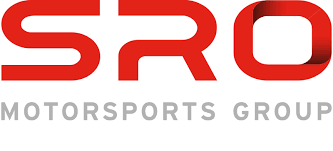 | 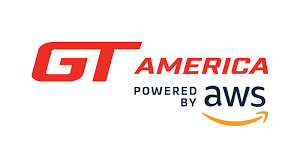 |




